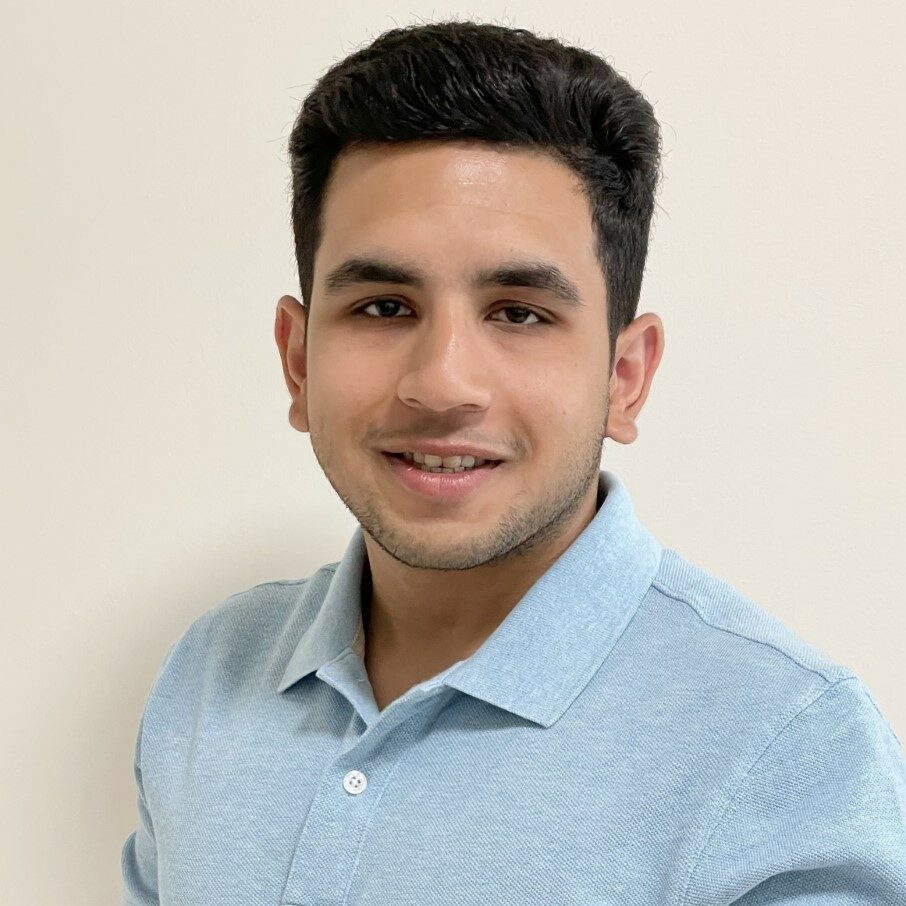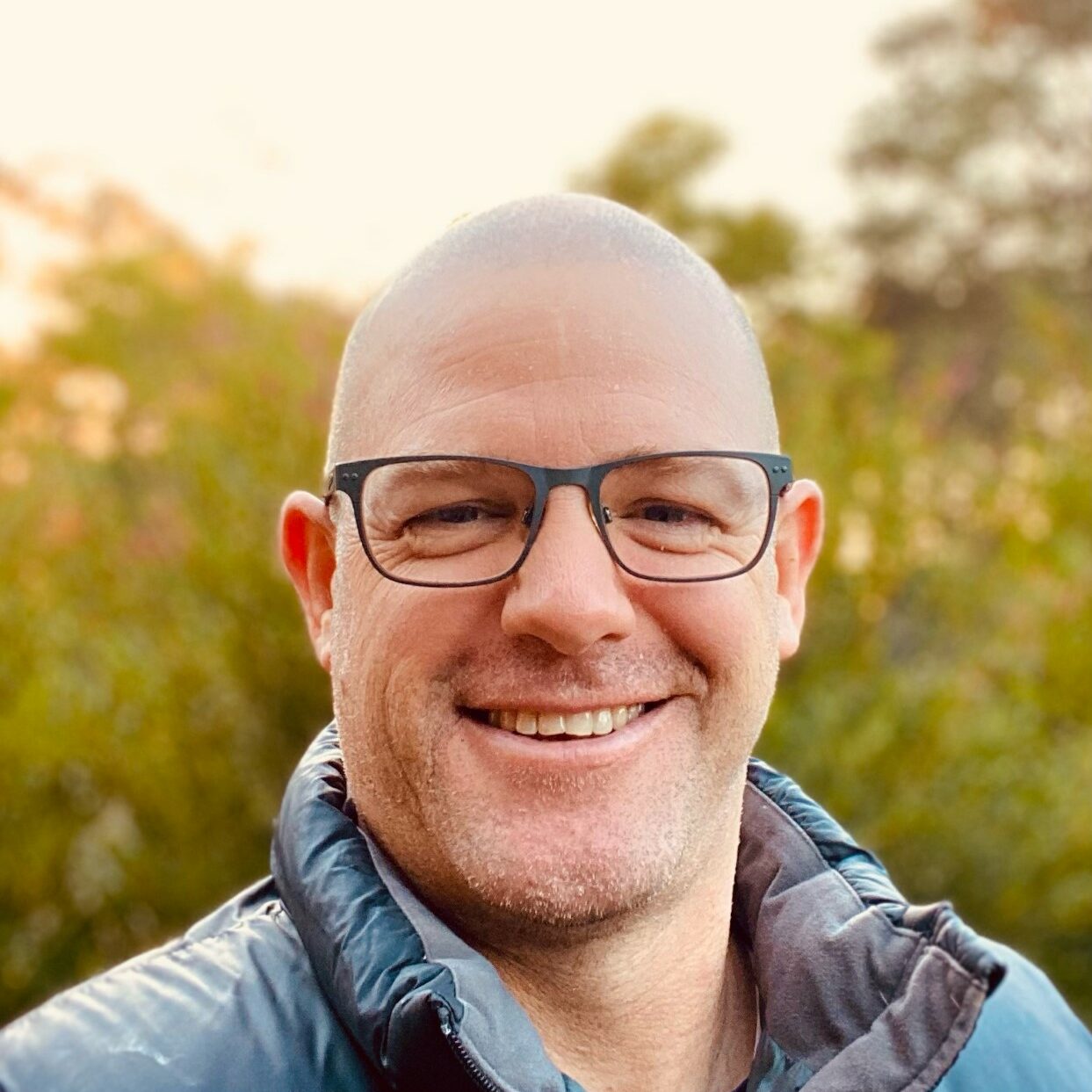
Accurate simulation of Antarctic landfast sea ice and its impacts
Project 6: Sea Ice
This PhD project aims to model fast ice in the East Antarctic which will elucidate the primary mechanism for the observed variation and changes of the continental shelf sea-ice mass while laying the ground work for building a forecasting model. The focus of this project will be to re-design an existing ice-ocean model to include realistic Antarctic fast ice. Then using this new East Antarctic Fast Ice Model, I will perform a series of synthetic experiments to determine the drivers of this fast ice and the role of dense water formation along the continental shelf. This should elucidate the recent shift in sea-ice mass extent and allow for future models to better incorporate sea-ice into Earth system models with a higher degree of confidence.
Supervisors
Alexander Fraser (AAPP)
Will Hobbs (AAPP)
Phil Reid (BoM)
Wilma Huneke (ANU)
Paul Sandery (CSIRO)
Biography
I am a graduate of the University of California Santa Cruz Institute of Marine Science, where I completed a Masters of Ocean Science investigating the wave dynamics of Monterey Bay in relation to coastal geometry as measured from coastal ocean radars. Before this, as an undergraduate at California State University Monterey Bay, I completed an honours project (Capstone Thesis) on a Miniaturised System for Particle Exposure Assessment. This was built on work completed during a year-long Fellowship at Lawrence Berkeley National Laboratory.
I have served in two militaries, with a combined service experience of nine years. In my late teens, I gained over 1000 hours as a flight deck fire fighter aboard a nuclear aircraft carrier on operations in the Persian Gulf and Mediterranean Sea. More recently, in the RAN, I led small teams on the bridge of a guided missile frigate (and other vessels) with over 3,500 hours and over 30,000 nautical miles travelled in this capacity.
I am currently employed as a Meteorological & Oceanographic (METOC) Officer in the Royal Australian Navy (RAN) charged with providing International Civil Aviation Organisation (ICAO) compliant aviation forecasts as well as tactical ocean forecast summaries and daily forecast briefs to both military and civilian stakeholders and decisions-makers.
On the other side of my professional experience, I have been employed as a researcher and lecturer for positions in five universities with over fifteen years as a certified radar technician, project manager, computer programmer, data manager and coastal oceanographer.

Katherine (Katy) Baker
PhD Student
E: katherine.baker@imas.edu.au
Social Links
Date Commenced: 01.12.2021
Understanding the role of micronekton in the export of carbon in the Southern Ocean
Project 5: Biogeochemistry / Project 7: Krill and Ecosystems
An important, yet understudied component of the biological carbon pump in the Southern Ocean is the active transport of carbon by micronekton (taxonomically diverse pelagic animals between 2-20cm), known as the mesopelagic migrant pump. A significant portion of the micronekton community undertakes daily vertical migration where they move from the mesopelagic layer (200–1000m) to the epipelagic layer (0–200m) at night to feed. Micronekton contribute to the export of atmospheric carbon by feeding in the surface layers and excreting carbon rich faeces in the deep, yet little is known about the extent of carbon they transport. Using data and samples collected during the AAPP 2020/2021 SOLACE (Southern Ocean Large Area Carbon Export) voyage, I aim to gain a better understanding of the role micronekton play in the carbon cycle by linking the ecology and biogeochemistry of micronekton in the Southern Ocean. This project fits within the Biogeochemistry (theme 2) and Krill and Ecosystems (theme 3) AAPP projects. This project will also contribute to international efforts of the Joint Exploration of the Twilight Zone Ocean Network (JETZON, https://www.jetzon.org/).
Supervisors and their affiliation:
Prof. Philip Boyd (AAPP & IMAS), A/Prof. Kerrie Swadling (IMAS), Dr. Ben Scoulding (CSIRO)
Biography
I am interested in the interface between ecology, biogeochemistry, and the remote sensing used to help us gain insight into these processes. In 2019, I completed a M.Sc. in Marine Biology at James Cook University, Townsville. My masters work focused on investigating the use of acoustic backscatter to identify potential scallop habitats from substrate properties. Since then, I have worked as a research assistant at IMAS across interdisciplinary projects based in Taroona and Salamanca including exploring the effect of seismic surveys on marine taxa. In December 2020 I participated in the AAPP SOLACE (Southern Ocean Large Area Carbon Export) voyage to the Southern Ocean. Here, we used a suite of complementary sampling techniques to understand the micronekton community composition and extent of their diel vertical migration. I will extend on this research by integrating the biogeochemistry of mesopelagic biota through my Ph. D. at the University of Tasmania.
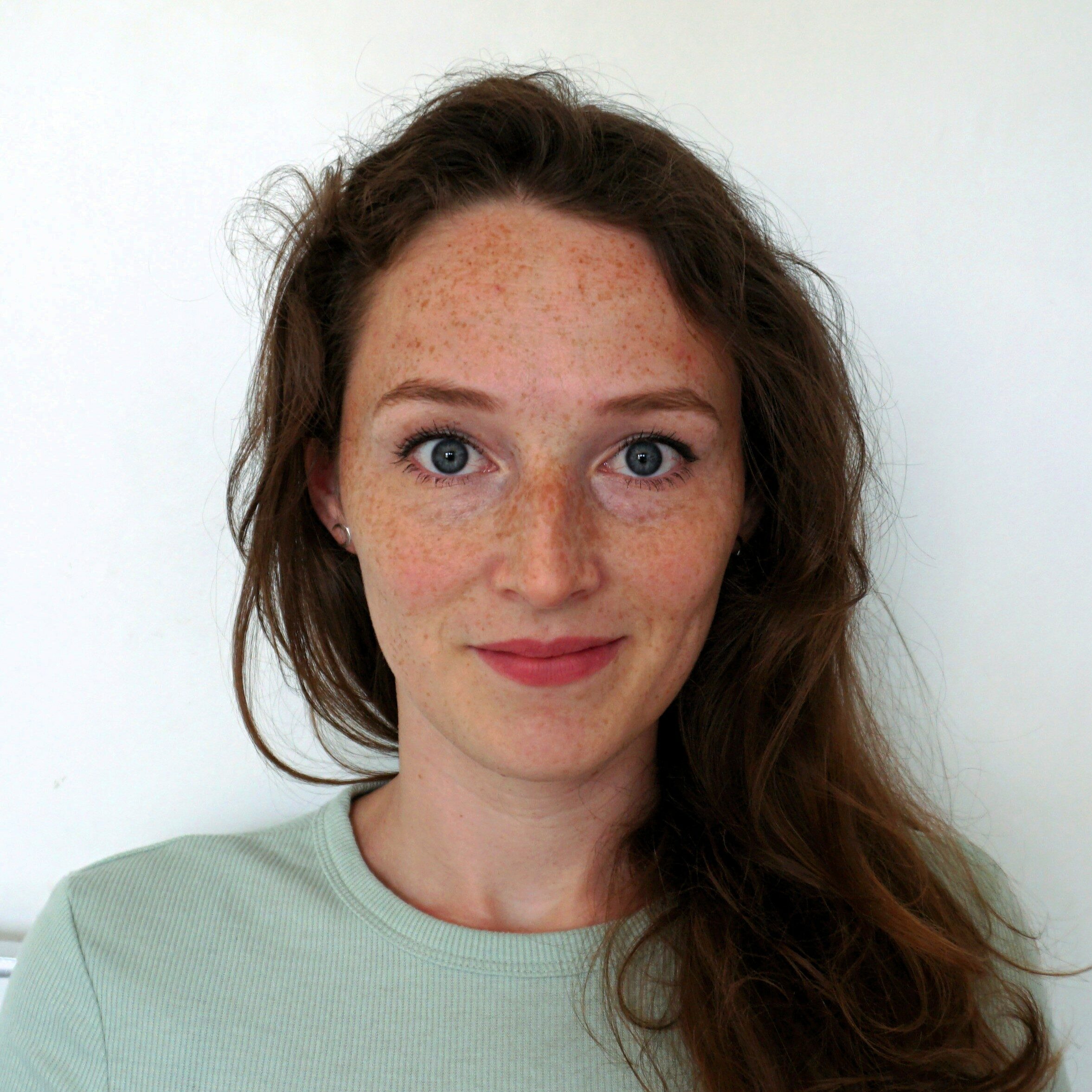
Edelgard Baumann
PhD Student
E: edelgard.baumann@utas.edu.au
Social Links
Date Commenced: 06.03.2024
Trace elements in the Southern Ocean
Project 5: Biogeochemistry
My PhD research investigates the distribution and variability of trace elements across the Southern Ocean, specifically along the I09S section. Positioned within the GEOTRACES program, this project aims to enhance our understanding of trace elements, their associated processes, sources, sinks, and the controlling factors. I will focus on the physical and biological processes in the Southern Ocean, analysing trace element data to explore how these elements interact with ocean circulation, productivity, and other environmental variables.
Supervisors and their affiliation:
Thomas Holmes, Andrew Bowie, Scott Meyerink (IMAS/AAPP)
Biography
I am a marine geoscientist with a strong interest in oceanography, ocean chemistry, isotopes, and modeling. I hold a Bachelor's degree in Geo-ecology and a Master's degree in Marine Geosciences. My passion for marine science started during an internship in Brazil, where I worked with microfossils to reconstruct water masses. Throughout my Master's program, I specialised in geochemistry with a focus on isotopes (Nd, Sr). Currently, my research centres on the biogeochemistry/ trace elements of the Southern Ocean and the potential application in models.

The impact of Antarctic sea ice on simulated Southern Ocean watermass
Project 6: Sea ice
This project aims to explore how Antarctic sea ice and its particular role in transporting fresh water from the Antarctic coastline to the open ocean. The freshwater transformation plays an important role in sustaining the overturning circulation, thus influencing the heat and carbon absorption of the ocean which is poorly understood. Therefore, the latest Coupled Model Intercomparison Project (CMIP6) will be used to represent the performance of sea ice watermeas in different climate models. Furthermore, my project will quantify how this relates to simulated ocean heat and carbon uptake under current and future climate conditions. This project will help us to better understand the role of sea ice in Antarctica.
Supervisors and their affiliation:
Will Hobbs (UTAS/AAPP), Zanna Chase (IMAS/UTAS), Jan Zika (UNSW)
Biography
I am interested in the study of sea ice and related model simulation and remote sensing observations, as well as the impact of sea ice both in physical and biogeochemical aspects. I graduated from University of Tasmania with the Bachelor and Honours of Marine and Antarctic Science, and Ocean University of China with the Bachelor of Marine Science. I studied the break-up of fast ice and its impact on the offshore chlorophyll concentration in my Honours project. I am really appreciating the opportunity to do research on Antarctica during my PhD.

Physiological tolerance of Southern Ocean crustaceans
Project 5: Biogeochemistry / Project 7: Krill and Ecosystems
Marine crustaceans possess a range of thermal sensitivities and physiological tolerance limits, and they have an optimal thermal envelope where they function most effectively. Physiological limits are determined by the physical environment inhabited by a species and are influenced by physiological responses to temperature and to thermal changes in macromolecular structure and function. In the Southern Ocean many species are subjected to low and constant temperatures and our understanding of their resilience to ocean change, such as warming, is very limited. It is likely that long-term exposure to thermal stress will affect survival as temperatures exceed those required for reproduction and growth. In this project the capacity of Southern Ocean crustaceans to compensate for temperature-related changes in metabolism, cardio-respiratory physiology, and protein synthesis will be related to spatial variations (eg. latitudinal variation) in thermal tolerance limits.
Supervisors and their affiliation:
A/Prof. Kerrie Swadling IMAS/AAPP, Prof. Philip Boyd IMAS/AAPP and Dr. Kirralee Baker IMAS
Biography
In 2021 I completed my master’s degree in Marine and Antarctic Science, majoring in Marine Biology at the University of Tasmania. During my masters I developed an interest in zooplankton ecology, and during my second year my masters thesis looked at size distributions of zooplankton in the Southern Ocean along gradients of temperature and primary productivity. Since then I have worked as a Research Assistant at IMAS, working primarily with the ZooScan Integrated Imaging system to create image libraries of zooplankton samples.
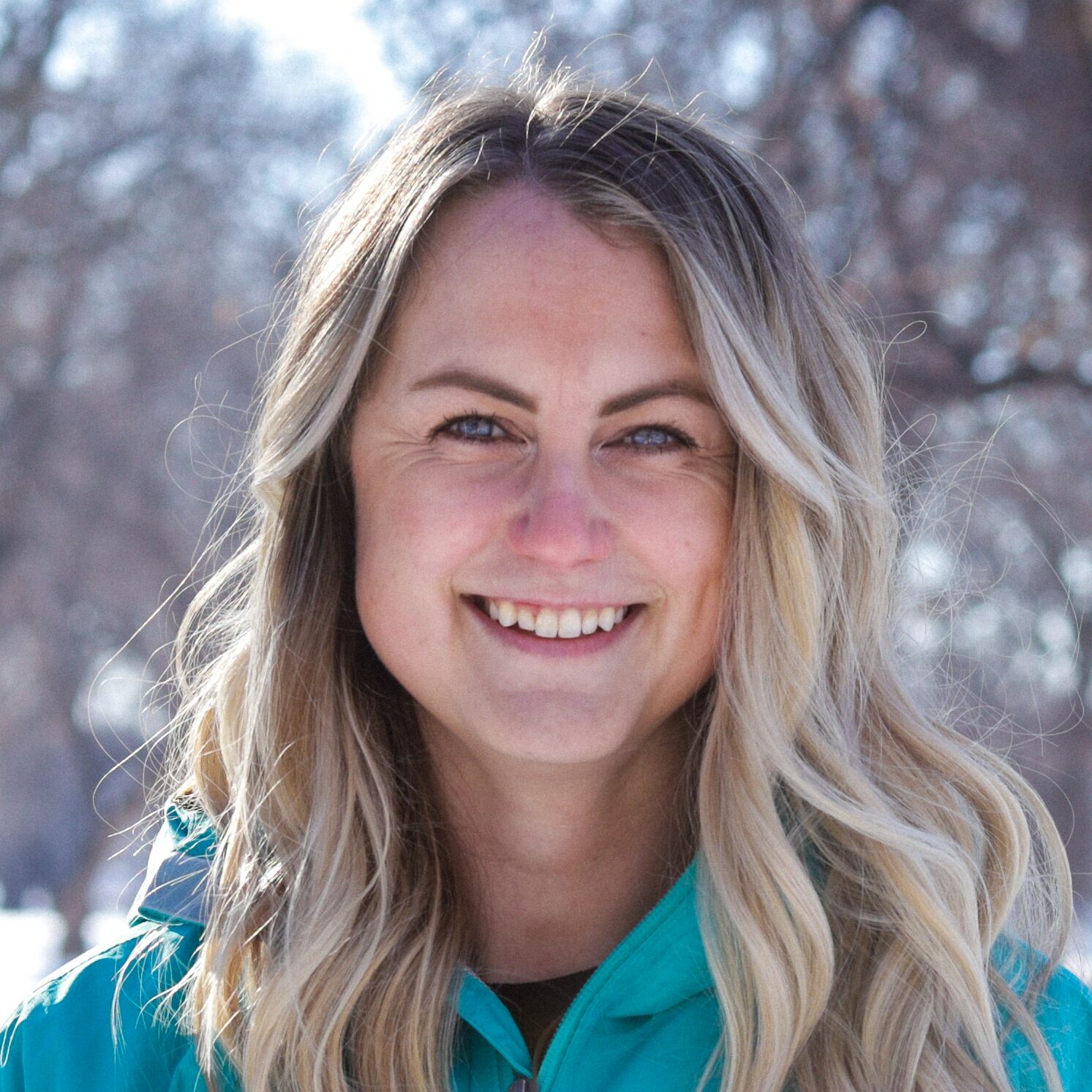
Physical controls of Southern Ocean ice-associated primary production
Project 6: Sea Ice
This PhD project aims to understand the physical influences on the spatial and temporal variability of ice algae and phytoplankton in the Southern Ocean. Linking existing ship-based underway data with satellite-derived sea-ice concentration data and using novel data streams from under-ice BGC floats, this project aims to detect and investigate drivers of the spatial distribution and temporal development of under-ice phytoplankton blooms off East Antarctica. This study will also provide the first time-series of ice algal accumulation for Antarctic land-fast sea ice, which will improve our parameterization of ice algal dynamics into global productivity models.
Supervisors and their affiliation:
Christina Schallenberg1; Klaus Meiners2,3; Sophie Bestley1; Alex Fraser3
1 Institute for Marine and Antarctic Studies, University of Tasmania, Hobart, Australia
2 Australian Antarctic Division, Antarctic Climate Program, Department of Agriculture, Water and the Environment
3 Australian Antarctic Program Partnership, Institute for Marine and Antarctic Studies, University of Tasmania, Hobart, Australia
AAPP Objective:
This project contributes to address AAPP objectives on the effects of sea-ice change on primary productivity and biogeochemical processes in the Southern Ocean by combining quantitative analyses of ship-based and BGC-Argo data, remote sensing products, and newly collected in-situ data.
Biography
I am interested in how physical and biological processes influence the magnitude, composition, and phenology of marine primary production and nutrient dynamics. I completed my BSc hons (Dalhousie University) in 2015 and successfully defended my MSc (University of Manitoba) in 2018. My masters focused on how natural physical gradients influence sea ice algal communities in the Arctic, particularly how under-ice currents and riverine input can influence nutrient dynamics and ice algal biomass. For this work, I received the Weir Award for the most outstanding master’s thesis and a Fellowship in Arctic Research for leadership and excellence in Arctic research. I have been fortunate to participate in several field campaigns in the Arctic, including leading a successful one-month-long ice camp with our international collaborators while a graduate student. Since then, I have worked as a research associate at the Centre for Earth Observation Science (University of Manitoba), examining how biological processes are affected by freshwater input into the marine system before starting my Ph.D. at the University of Tasmania
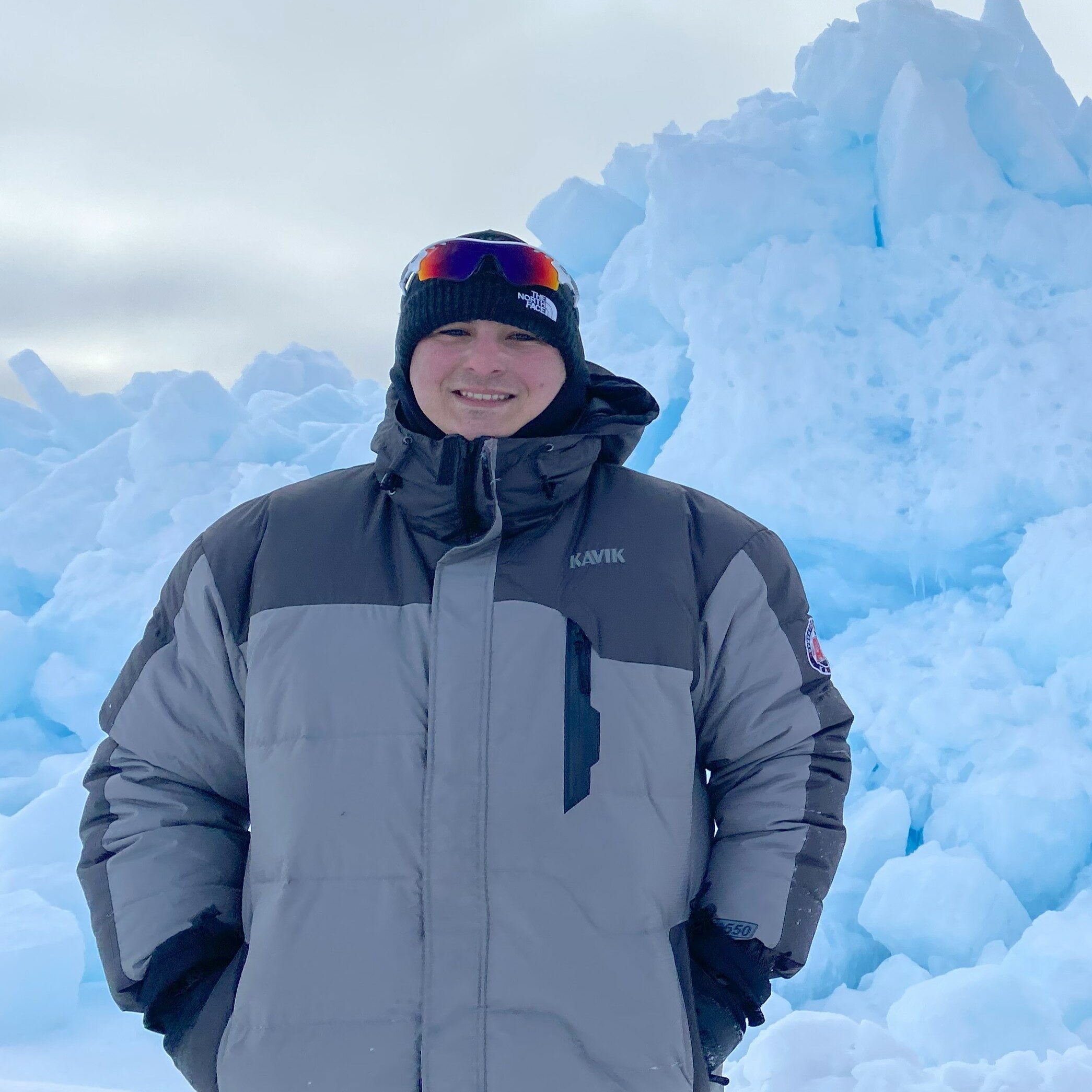
Understanding Antarctic landfast sea ice: its drivers and 21st Century fate
Project 6: Sea Ice
This PhD project aims to determine the drivers which most affect the interannual variability of landfast sea ice along Antarctic coastlines. Landfast ice plays many important roles around Antarctica including but not limited to buttressing ice shelves, influencing the size of polynya which contribute to Antarctic bottom water formation and dissipating energy which would otherwise impact vulnerable ice shelfs and tongues. Little is known about which climate drivers and weather conditions have the greatest effect on the extent of landfast ice during each season. Over the course of my project, I will use oceanographic information from the ACCESS-OM2 model to assess the importance of various oceanic factors on landfast ice extent. I will conduct a similar analysis with a reanalysis atmospheric data. At a larger scale I will also investigate how decadal climate trends such as SAM (Southern Annual Mode), ENSO (El Nino Southern Oscillation), ZW3 (Zonal Wave 3), and IOD (Indian Ocean Diploe) affect the extent of the landfast ice each season. This project will contribute to Project 6 at AAPP because it will help improve our knowledge about the factors which control landfast ice extent and how landfast ice will change in the future.
Supervisors and their affiliation:
Alex Fraser (IMAS/AAPP), Will Hobbs (IMAS/AAPP), Greg Leonard (University of Otago)
Biography
I conducted my undergraduate studies at Coastal Carolina University in South Carolina, USA where I earned my Bachelor’s with Honors in Marine Science with minors in Marine Geology and Applied Mathematics. During these studies I was always fascinated with the climate and cryosphere. I wanted to know more about the cryosphere which led to me apply for post-graduate positions relating to sea ice or glaciers. I found an opportunity to study landfast sea ice in the Arctic under the supervision of Andy Mahoney in Fairbanks Alaska. There, I developed a 28-year climatology of landfast ice in Alaska and utilised specific properties of a remote sensing technique called InSAR (Interferometric Synthetic Aperture Radar) to not only identify landfast ice but assign a value of relative safety. The research I conduced in Alaska was as part of a Master’s in Geophysics. About halfway through my master’s program I attended the International Glaciological Societies conference on sea ice in Germany. It was here I was exposed to how different Arctic sea ice is from Antarctic sea ice. My curiosity and intrigue pushed me to want to learn more about how and why the sea ice in the polar regions are different. My sea-ice knowledge felt it could not be complete without studying Antarctic sea ice.
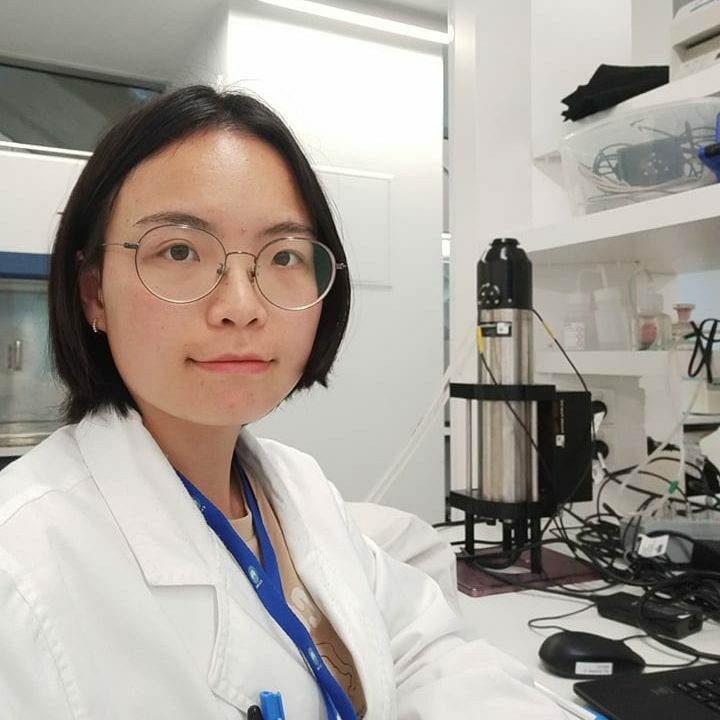
Impacts of alkalinity enhancement on SO plankton-Impacts of carbonate chemistry and trace metal perturbations related to ocean alkalinity enhancement on Southern Ocean plankton communities
Project 7: Krill and Ecosystems
The Southern Ocean has recently been identified as a hot spot for alkalinity enhancement, due to its unique chemical and physical conditions. The Southern Ocean displays the great regional mean carbon-uptake efficiencies. Biological productivity in the Southern Ocean is limited by iron, and potentially by other trace metals. Thus, the large-scale trace metal perturbations associated with ocean alkalinity enhancement would likely affect productivity and ecosystem structure. My project aims to identify the vulnerability of Southern Ocean plankton communities to perturbations associated with ocean alkalinity enhancement. These are mainly carbonate chemistry perturbations (increasing pH), trace metal enrichment and potentially silicate fertilization. The overarching goal is to understand how these perturbations individually and/or combined will (i) change the physiological performance of key Southern Ocean phytoplankton species, (ii) affect higher trophic levels such as krill or copepods who feed on phytoplankton, and (iii) change the composition of Southern Ocean phytoplankton communities.
Supervisors and their affiliation:
Lennart Bach1, Robert Strzepek2, Kerrie Swadling1
1 Institute for Marine and Antarctic Studies, University of Tasmania, Hobart, Australia.
2 Australian Antarctic Program Partnership, Institute for Marine and Antarctic Studies, University of Tasmania, Hobart, Australia.
Biography
I completed my bachelor’s degree at Xiamen University, China. I finished my master’s degree in marine and Antarctic Science at the University of Tasmania. During my master research project, I got to know the ocean alkalinity enhancement (OAE) projects which aim to store more CO2 in the ocean by increasing the ocean alkalinity. I investigated the impacts of OAE-related nickel enhancement on various phytoplankton’s growth. Now I am interested in how other trace metals perturbations will influence the phytoplankton and zooplankton community.
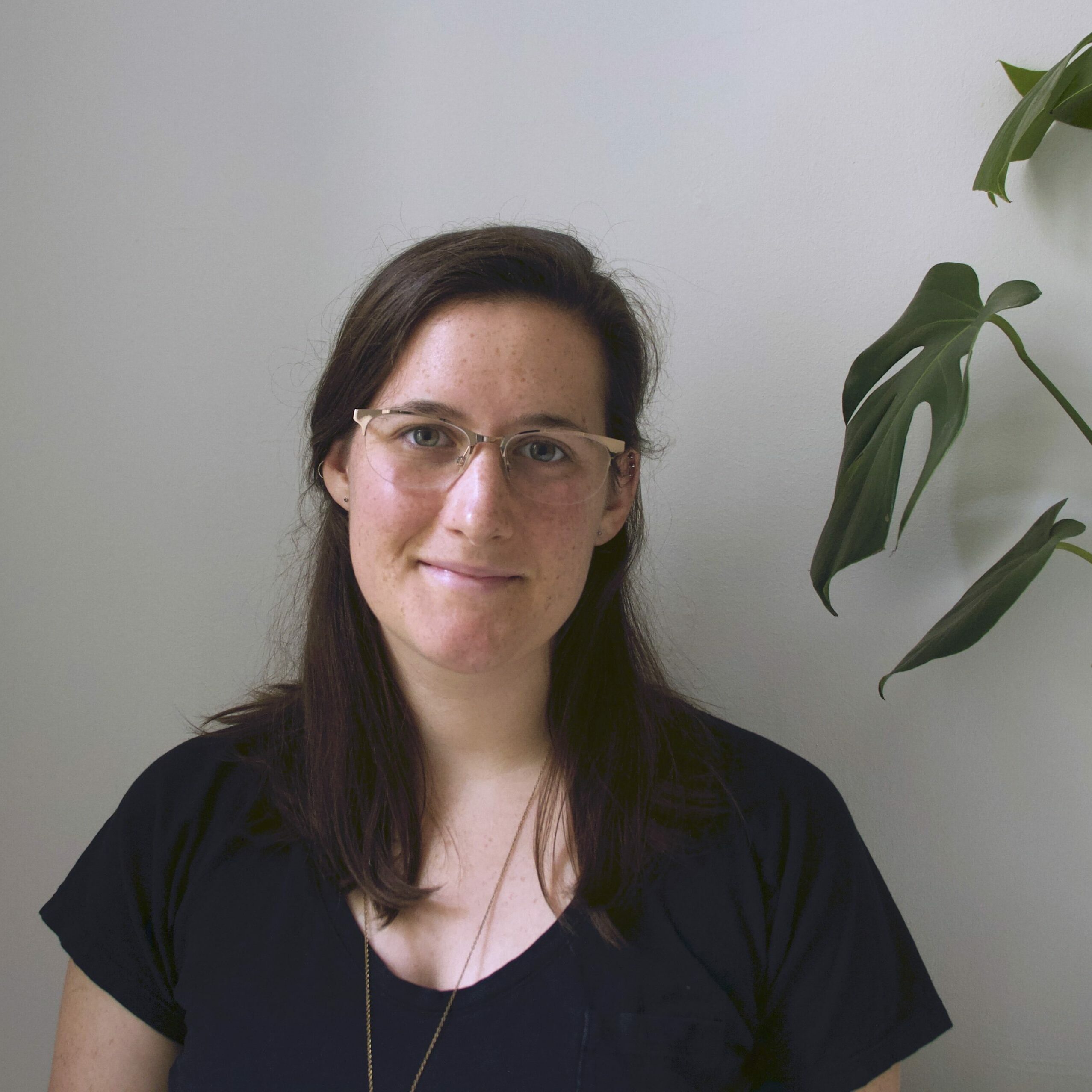
Margaret (Meg) Harlan
PhD Student
E: margaret.harlan@utas.edu.au
Social Links
Date Commenced: 15.02.2021
Volcanic fertilization of the Kerguelen Plateau
Project 1: Atmosphere / Project 2: Ice Cores
This interdisciplinary project aims to use the high-resolution record from the Mount Brown South and other East Antarctic ice cores, together with atmospheric circulation models to investigate how the volcanism of the Heard and McDonald Islands impact the iron supply and biological productivity of the surrounding region. We aim to use ice core tephra sampling to extend the Heard Island volcanic record and investigate the ways that local volcanic activity impacts the biogeochemistry of the Southern Ocean and expand our understanding of the potential role of regional volcanism in confounding climate reconstructions.
Supervisors and their affiliation:
Tessa Vance (IMAS/AAPP), Delphine Lannuzel (IMAS), Jodi Fox (IMAS), Helle Kjær (University of Copenhagen, NBI - PICE), Anders Svensson (University of Copenhagen, NBI - PICE).
AAPP Objective:
This project fits within the Ice Cores, Atmospheres, and Biogeochemistry AAPP projects, and addresses AAPP objectives using ice core data and atmospheric modeling to contribute to our understanding of volcanic impacts on the biogeochemistry of the Southern Indian Ocean region.
Biography
I am interested in the ways that ice cores provide a means of time travel to help us learn about the past, present, and future of the planet. In 2016, I completed both a B.S. in Environmental Science, and a B.A. in Dance from Tulane University, where my scientific research focused on timescales of change in river delta geomorphology. I subsequently worked as a primary/elementary school environmental educator in public school and nonprofit settings, before moving to Denmark to start my masters. In 2020, I completed an M.Sc. in Climate Change at the University of Copenhagen. My masters work involved producing a new continuous flow analysis record of the of the 40-year-old Greenlandic Dye-3 ice core, providing new, high-resolution data records of the Glacial and early Holocene sections. Since then, I have worked as a Research Assistant with the Physics of Ice, Climate and Earth (PICE) at the Niels Bohr Institute at the University of Copenhagen, where I continued my work with the Dye-3 ice core. In February 2021, I started a PhD at IMAS at the University of Tasmania, enrolled as a double degree/cotutelle student at the University of Copenhagen.

How do zooplankton shape the response of ocean productivity in a changing ocean?
Project 5: Biogeochemistry / Project 7: Krill and ecosystems
The project is about iron and carbon-cycling in zooplankton. Various artificial iron (Fe) addition experiments have shown that the primary factor limiting the growth of phytoplankton in High Nutrient Low Chlorophyll (HNLC) waters, such as the Southern Ocean, is the availability of Fe (an essential trace element). Until now, the emphasis has primarily been on physical processes and ‘bottom up’ factors that influence phytoplankton growth, such as light and micro- and macro-nutrient availability. However, as secondary consumers, zooplankton graze on phytoplankton directly and excrete and egest essential resources that could stimulate phytoplankton production and export carbon to deeper layers.
This project aims to achieve two primary objectives. The first objective is to quantify the iron (Fe) content and Fe variability in zooplankton and determine its relation to environmental conditions and zooplankton physiological requirements. The second objective is to assess the impact of ocean warming and potential changes in food (phytoplankton) supply on zooplankton Fe content, and Fe excreted and egested by zooplankton. Both objectives will be undertaken using a combination of laboratory and field experiments.
Supervisors and their affiliation:
Andrew Bowie (IMAS), Lavenia Ratnarajah (CSIRO), Kerrie Swadling (IMAS)
Biography
Throughout my bachelor's and master's thesis at the University of Hamburg, I was involved in the multidisciplinary project Trophic Transfer Efficiency in the Benguela Current (TRAFFIC). Our lab focused on phyto- and microzooplankton to quantify the base of the food web in the Benguela Upwelling System. I have always been interested in understanding the relationship between plankton and abiotic factors such as nutrient availability, etc. to get a better overview of the big picture. I have also gained experience of carbon fluxes in the ocean through my publication "A first estimate of the effect of offshore wind farms on sedimentary organic carbon stocks in the Southern North Sea", which came out of a previous study project.

Deriving accurate sea ice (and snow) thickness near-real time estimates for the East Antarctic region
Project 6: Sea Ice
My PhD project focuses on the sea-ice thickness distribution in the East Antarctic region by using both satellite data and in situ measurements, the latter for evaluation. During this process, snow depth over sea ice will also be calculated.
This project mainly contributes to AAPP Theme 3 Project 6: Sea Ice. Antarctic sea ice has great impacts on global climate change mainly through altering and regulating the ice albedo feedback. It also provides habitats for Antarctic krill, a key species which play a significant role in the Antarctic ecosystem.
The drivers of changes in Antarctic sea ice are not fully understood. Specifically, the Antarctic sea ice thickness has significant impacts on the Antarctic climate. Sea ice thickness determines a number of significant fluxes in Antarctic such as the air-ocean heat flux and the fresh water and salt fluxes among different ocean parts. By deriving the sea ice thickness in the East Antarctic region through the satellite data and evaluating it with the in situ measurements, we can obtain some relatively accurate estimates of its spatial and temporal distributions as well as their seasonal, annual, and decadal changes during the satellite era.
Such results could contribute to the first key question of Project 6: How is the East Antarctic sea ice environment varying and changing, and which processes are responsible for these changes? Accurately estimated sea ice thickness changes in the East Antarctic region could help us know more about changes in response to climate change during the past three decades and the impacts of these changes on Antarctic and global climate.
Supervisors and their affiliation:
Dr Stuart Corney: Institute for Marine and Antarctic Studies, University of Tasmania;
Centre for Marine Socioecology, University of Tasmania; Australian Antarctic Program
Partnership, University of Tasmania.
Dr Petra Heil: Australian Antarctic Division; Australian Antarctic Program Partnership,
University of Tasmania.
Dr Rachel Tilling: NASA Goddard Space Flight Center; Earth System Science
Interdisciplinary Center, University of Maryland
Biography
I graduated from the IMAS-Ocean University of China 2+2 Program (K4C) with a Bachelor of Marine and Antarctic Science with Honours in the University of Tasmania and a Bachelor of Science (Marine Sciences) in the Ocean University of China. My Honours project was about Characteristics and Trends of the Campbell Plateau Meander in the Southern Ocean, supervised by Dr Amelie Meyer and Dr Chris Chapman. Now we are working on the adaptation of my Honours thesis into a manuscript that could be submitted to a journal. I am interested in climate change, Antarctic science and the Southern Ocean, with a particular interest in the Southern Ocean fronts and meanders and the Antarctic sea ice.

Heat transport in the Denman region
Denman region holds the second largest glacier in East Antarctica, Denman Glacier, which has experienced rapid changes in recent years. Basal melt is the principal driver of the Antarctic ice shelf thinning, driven by the Circumpolar Deep Water intrusions. In this project, we will use a suite of perturbation experiments based on the high-resolution regional model in the Denman region to quantify the cross-shelf heat transport and heat pathways. We have three objectives for this study:
(i) Identify and understand the pathways of heat from the open ocean onto the continental shelf and then toward the glaciers.
(ii) Identify, understand, and quantify processes responsible for heat transport, such as tides, eddies, dense water export and various forcings.
(iii) Understand the role of bathymetry, specifically, the specific topographic scales and features that affect heat transport and ocean processes.
This project addresses the key science question in Project 4 (Oceanography): ‘How will changes in ocean circulation and temperature affect East Antarctic ice shelves? The project will determine where and how ocean heat reaches East Antarctic ice shelves and provide improved understanding of the factors that regulate poleward ocean-heat transport across the Southern Ocean to the ice-shelf cavity.’
Supervisors and their affiliation:
Dr. Maxim Nikurashin (AAPP & UTAS)
Dr. Beatriz Pena-Molino (AAPP & CSIRO)
A/Prof. Paul Spence (AAPP & UTAS)
Biography
I am interested in heat transport in Antarctica by using high-resolution models. I completed my BSc Hons (IMAS) in 2022. My Honours focused on the effect of the seafloor roughness on the Antarctica circulation and ice shelf melting by comparing two bathymetry datasets in the Denman region. I find using modelling to see the various ocean processes fascinating and I am fortunate to continue exploring Antarctica during my PhD.

Camila Cataldo Mendez
PhD Student
E: camila.cataldomendez@utas.edu.au
Social Links
Date Commenced: 23.05.2022
Use of biomarkers to trace how changing sea ice affects the ecological roles of Antarctic krill and zooplankton in the Southern Ocean
Project 7: Krill and Ecosystems
Given the likelihood of additional ice-free days throughout the summer, determining how krill and zooplankton grazers exploit sea-ice habitat is critical to understanding reactions to changes in sea-ice seasonality and coverage. This research will use stable isotopes, highly branched isoprenoids, and DNA and eDNA metabarcoding, together with ecosystem modelling to build quick and repeatable approaches for characterising krill and zooplankton predation across large geographical and temporal dimensions. This research aims to give ecological data to a long-term monitoring plan for spatial management of the krill fishery in East Antarctica's marginal ice zone.
This project aligns closely to project 7 (krill and ecosystems) and links with project 6 (sea-ice) by unravelling the dependency of the former, krill (and other local zooplankton grazers) to sea-ice algae located within and surrounding the marginal ice zone of East Antarctica. This project seeks to better understand the magnitude of dependency as well as the potential responses to future change of this important habitat.
Supervisors and their affiliation:
Dr Christine Weldrick IMAS/AAPP, A/Prof Kerrie Swadling IMAS/AAPP, Dr Leonie Suter AAD
Biography
I am particularly interested in Antarctic krill and zooplankton ecology, focusing on biochemical tools. Recently I’ve gained interest in the use of ecosystem modelling as a tool to study and predict food web responses to environmental changes.
In 2019, I completed a bachelor and honours in Marine Biology at Universidad Católica de la Santísima Concepcion, Chile. My Honours work depicted the biochemical characteristics of benthic communities impacted by glacier melt in the Antarctic Peninsula. This project introduced me to Antarctic research and gave me the drive to move to Australia to pursue a career in research. In 2021, I graduated from the University of Tasmania with a Master in Marine and Antarctic Science. My masters work focused on investigating the energy content and demographic characteristics of Antarctic krill swarms and related these findings with whale occurrence. Now I moved out of the specific krill-whale relationship and broadened my scope by looking at the energy content of all trophic levels and using biomarkers to depict trophic relationships.

Southern Ocean clouds: Can we do better?
Project 1: Atmosphere
Clouds over the Southern Ocean and Antarctica remain poorly characterized by climate and weather models, which has led to significant biases in other aspects of the climate system, including sea ice, sea surface temperatures and precipitation. Part of this issue is due to a lack of observations in the region, which has meant that the processes important for cloud formation in the Southern Ocean and Antarctic have been understudied.
In this project we will identify the best model configuration available to most accurately represent cloud and precipitation processes over the Southern Ocean and Antarctic region, in comparison to recent field campaigns and using the most recent model evaluation tools. By testing different configurations and altering how clouds and precipitation are parameterised, we will be able to gain a better understanding of the processes that are important for the region.
This project aligns with the Atmosphere project within the AAPP. The project aims to evaluate how well the ACCESS model can simulate clouds and precipitation over the Southern Ocean and Antarctic. This knowledge will help us improve the representation of clouds in our climate and weather models and will be of importance to a number of multi-disciplinary ACCESS users both with-in Australia (BoM, CSIRO), and to users of the Unified Model family (e.g., United Kingdom Met Office).
Supervisors and their affiliation:
Sonya Fiddes (IMAS/AAPP), Marc Mallet (IMAS/AAPP), Simon Alexander (AAD/AAPP), Nathan Bindoff (IMAS/AAPP)
Biography
I got my bachelor’s degree at the Ocean University of China and the University of Tasmania. I completed my Honours project at IMAS in 2022, which is about assessing the cloud radiative bias in ACCESS-AM2 model at Macquarie Island. My PhD project is about evaluating and improving the climate models in simulating clouds and precipitation properties over the Southern Ocean and Antarctica with the latest in-situ observations. I hope to contribute to the model development and help understanding the clouds over the Southern Ocean through my PhD.

Paola Papapetros
PhD Student
E: paola.papapetros@utas.edu.au
Social Links
Date Commenced: 01.04.2023
Ocean controlled sedimentation, subglacial water outflow and ice shelf basal melting, influences on ice sheet stability
Project 3: Ice shelves
Much of the marine ice sheet behaviour is thought to result from processes occurring at the grounding zone, where the ice sheet transitions into ice shelves and meets the ocean. The grounding zone is characterised by several influences on the ice flow that include where the basal melting is highest, and over hours to weeks is likely influenced by sediment deposition and bedrock uplift rates due to unloading from the last glacial maximum, known as isostatic adjustment. The focus of this project is understanding the geometric controlled feedback between subglacial water outflow, basal melting, and sedimentation process in the sub-ice-shelf ocean cavity, that may actually contribute to an evolving bed shape that can either accelerate or delay retreat under different climate forcing scenarios.
This project approach includes numerical models to examine emergent behaviour from the system, starting with Ice Shelf Version of the Regional Oceanic Modelling System (ROMSIceShelf) and then transit to a fully coupled ice-sheet/ocean/subglacial model using the Framework for Ice Sheet and Ocean Coupling (FISOC).
Supervisors and their affiliation:
Chen Zhao (AAPP), Ben Galton-Fenzi (AAD), Fabio Boeira Dias (ACEAS)
Biography
Paola is now at IMAS (UTAS in Hobart) developing a coupled ice-sheet/ocean/subglacial model for her PhD. She also holds a BSc in Oceanography from University of Sao Paulo, Brazil. Previously, Paola studied the relation between interannual climatic events and the geomorphology of Guarda do Embau, Santa Catarina, Brazil. In addition, she worked as Physical Oceanographer at Precursore: Port Consulting, with tide data and geometrical leveling analysis for hydrographic surveys. Paola was funded by CNPq (National Council for Scientific and Technology Development) and MCTI (Ministry of Science, Technology, and Innovation) in Brazil during her honours. Her current research interests are Antarctica, Ice Sheets, Grounding zone, Climate Change, Geophysical Dynamics.
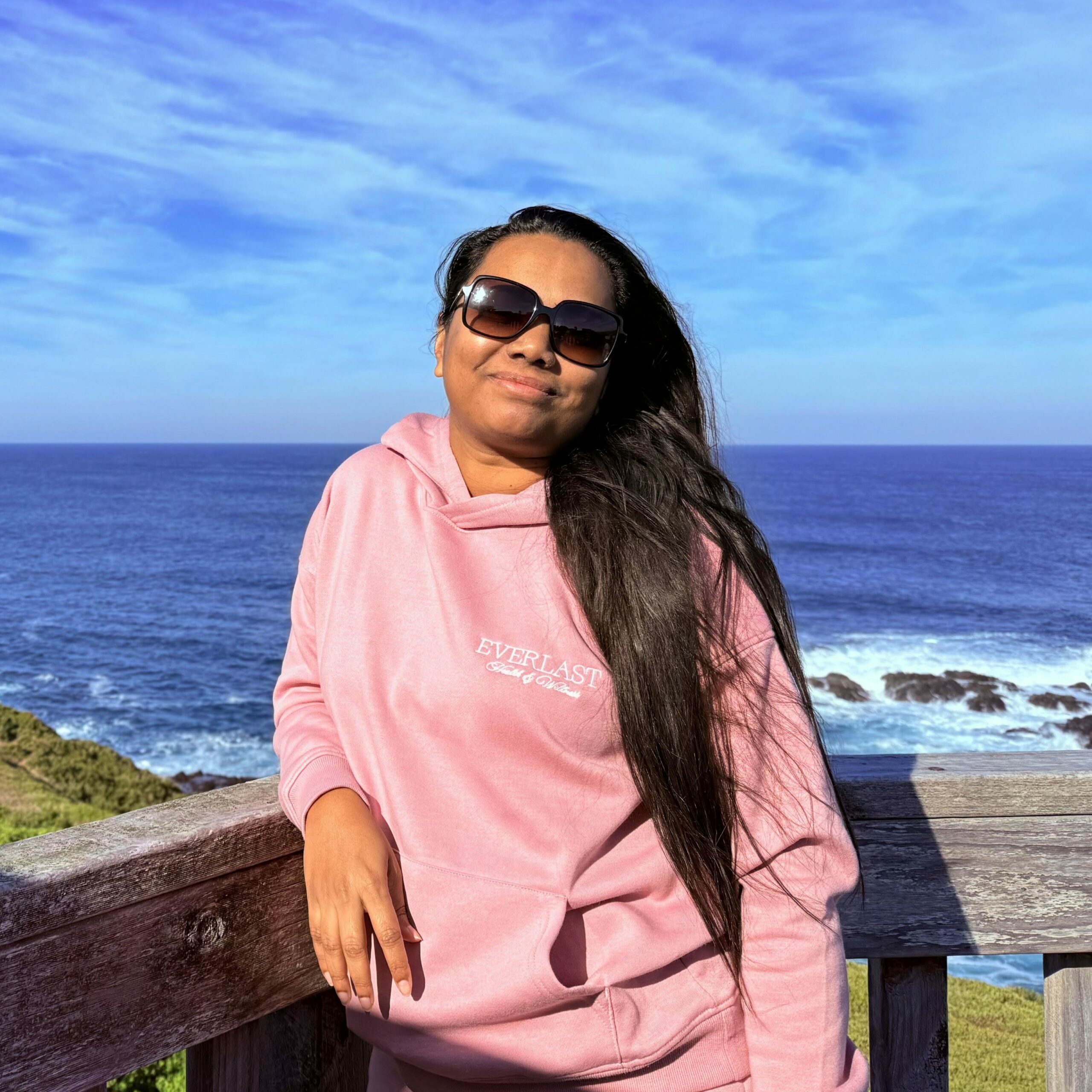
Nilusha Perera
PhD Student (affiliate)
E: n.thanippuliarachchige@utas.edu.au
Social Links
Date Commenced: 12.12.2024
Variability in Tasmanian hydroclimate - integrating instrumental and palaeoclimate data
Project 1: Atmosphere; Project 2: Ice cores
My research focuses on delineating Eastern Tasmania as a distinct hydroclimatic region by analyzing rainfall and streamflow variability using historical and palaeoclimate records. This study aims to enhance understanding of long-term hydroclimatic variability, assess the influence of key climate drivers [El Niño-Southern Oscillation (ENSO), Southern Annular Mode (SAM), Indian Ocean Dipole (IOD), and atmospheric blocking systems], and improve hydroclimatic risk assessments for adaptive water management strategies.
I am currently collaborating with Dr. Tessa Vance, whose expertise in Australian and Antarctic palaeoclimatology strengthens the integration of palaeoclimate records into hydroclimatic research. Our work explores how Antarctic climate drivers and long-term variability influence rainfall and streamflow patterns in Eastern Tasmania. By leveraging ice core archives from East Antarctica, we aim to extend and quantify hydroclimate variability beyond the instrumental record, improving regional water risk assessments.
This research aligns with AAPP’s Projects 1 and 2, particularly in understanding Antarctic climate influence on Eastern Australia’s hydroclimate. Through collaboration with AAPP scientists and water resource managers, my research contributes to improving hydroclimate risk assessments and enhancing long-term water security strategies for Australia. The findings will provide critical insights into past climate variability, informing future climate adaptation policies and reinforcing AAPP’s broader objectives.
Supervisors and their affiliation:
Dr Tessa Vance (AAPP/IMAS), Associate Prof Anthony Kiem (University of Newcastle), Prof Poul Christoffersen (IMAS)
Biography
Prior to commencing my PhD, I served as a Lecturer at Uva Wellassa University of Sri Lanka, where I contributed to academic teaching, curriculum development, and applied research in the areas of environmental modelling, agricultural sustainability, and climate change and risk management.
I hold a Master of Philosophy (MPhil) from University of Colombo in Climate and Hydrological Modeling, during which I developed a SWAT-based hydrological simulation for flood forecasting in the Kelani River Basin, Sri Lanka. The study contributed to an improved understanding of land management impacts on watershed-scale hydrological responses during extreme weather events. I also hold a BSc (Hons) in Agricultural Resource Management and Technology, from University of Ruhuna, Sri Lanka.
In 2017, I was selected to participate in the prestigious Sakura Science Exchange Program, organized by the Japan Science and Technology Agency (JST). This highly competitive program provided me with a unique opportunity to engage in short-term academic and scientific exchange in Kobe University, Japan, focusing on cutting-edge research, technological innovation, and cross-cultural collaboration.
Since 2021, I have served as Sri Lanka’s Country Representative for the Asia Pacific Nation Network (APNN), an affiliate network under the International Network of Women Engineers and Scientists (INWES) as the Secretary of Women in Science and Engineering Sri Lanka. In this capacity, I represent Sri Lanka in regional dialogues and collaborative initiatives aimed at strengthening the role of women in STEM across the Asia-Pacific.
Ultimately, I envision my career at the nexus of climate science, environmental sustainability, and policy engagement, contributing to global efforts for climate-resilient development.

Pimnara (Nia) Riengchan
PhD Student
E: pimnara.riengchan@utas.edu.au
Social Links
Date Commenced: 07.03.2022
Seasonal changes in calcification depth, population structure and shell morphology of Southern Ocean pteropods
Project 7: Krill and Ecosystems
As surface aragonite undersaturation events start to rapidly spread at the end of this decade and cover approximately 30% of the Southern Ocean surface by 2060, this PhD project will be the first study to explore the specific depth ranges where Southern Ocean pteropods typically form their aragonite shells known as the ‘calcification depth’. By combining the study of seasonal changes in population stability, biological mechanisms and shell morphology, this project aims to improve understanding of whether and how these indicator species will survive under rapid changing conditions of seawater carbonate chemistry throughout the Southern Ocean. This should provide a clearer image of changes in seawater carbonate chemistry and its effects on zooplankton communities, enhancing the effectiveness of decision-making to cope with the consequences of ocean acidification in the Southern Ocean.
Supervisors and their affiliation:
Dr. Christine Weldrick (AAPP), Associate Professor Kerrie Swadling (IMAS-UTAS)
Biography
Since I was in high school, I have been interested in marine sciences and life in the oceans. I have spent the last six years studying marine biology and developed a particular interest in calcifying zooplankton and ocean acidification. In 2021, I graduated from University of Tasmania with a Master of Marine and Antarctic Science majoring in marine biology and was placed on the University of Tasmania Roll of Excellence by achieving outstanding academic results. During my Masters, I had the incredible opportunity to conduct a ten-month research project about the effects of a shallow aragonite saturation horizon on Southern Ocean pteropods. This is the beginning of my main research interest, chemical responses of shelled pteropods.
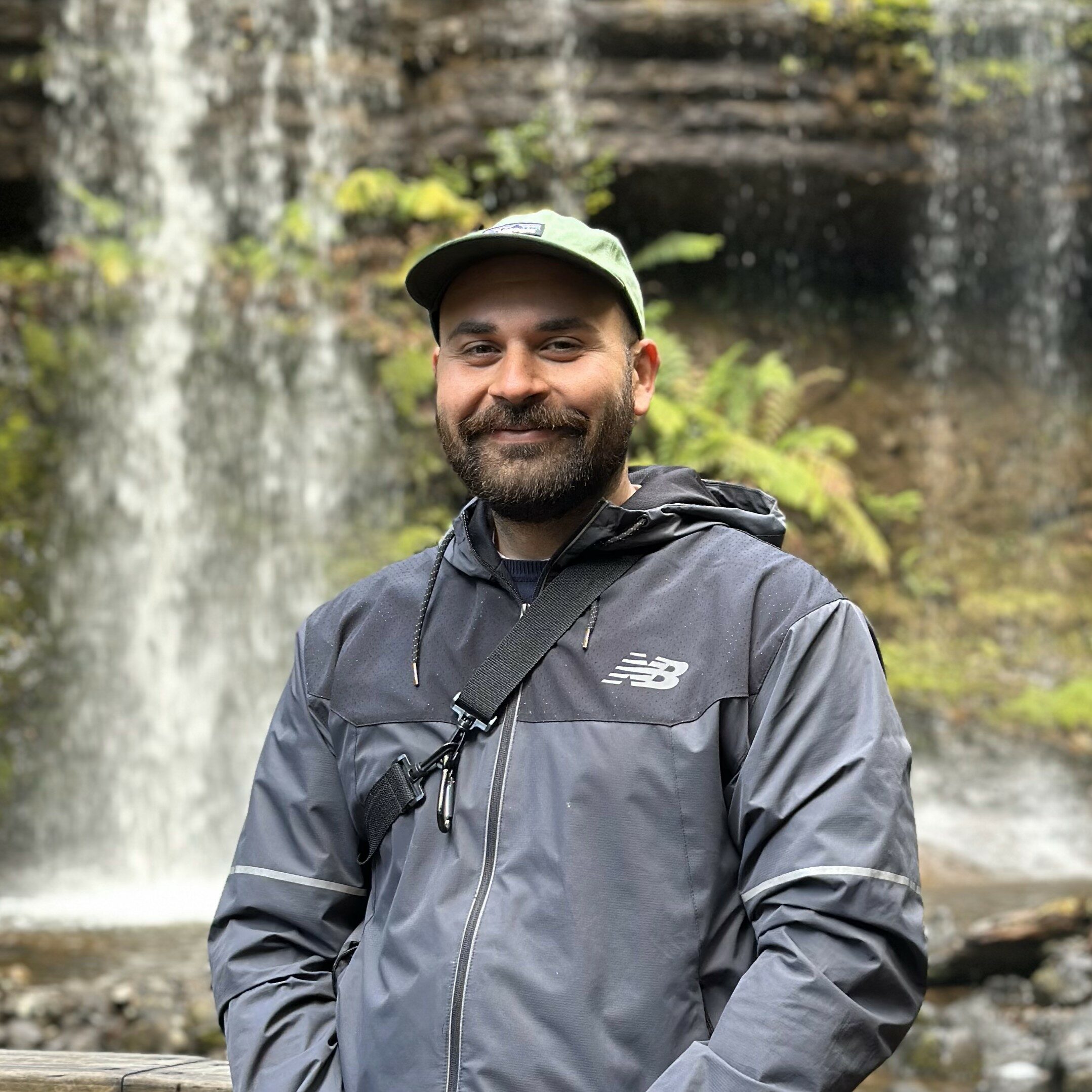
Environmental drivers and properties of Southern Ocean aerosol and cloud formation
Project 1: Atmosphere
Understanding how aerosols influence the cloud droplet concentrations is crucial for determining how much sunlight these clouds reflect into space, which affects ocean temperatures and global climate. This represents one of the major uncertainties in our understanding of the global climate. One approach to mitigate these uncertainties is to better comprehend preindustrial conditions, such as in the Southern Ocean, to quantify natural variability and improve our understanding of anthropogenic impacts on climate.
The initial phase aims to integrate and harmonise all aerosol size distribution data collected continuously on the RV Investigator (RVI) vessel from 2015 through 2024. In addition to these, observations obtained from the RSV Nuyina / RSV Aurora Australis and the remote coastal station WMO-GAW Kennaook/Cape Grim Baseline Monitoring Station, will be integrated. This will produce the most comprehensive long-term record of aerosol size distribution measurements ever collected in the remote Southern Ocean. This dataset will be critical for helping the international community better understand aerosol-cloud interactions in pristine environments.
The next step will involve studying how aerosol properties and their interactions with clouds and precipitation vary depending on different synoptic conditions and air mass history. These findings will provide crucial constraints for Earth System Models that simulate aerosol size distributions.
Finally, this project will explore the role that ocean micro-organisms play in aerosol formation and subsequent cloud properties. Organisms such as phytoplankton produce gases that can react and form new atmospheric aerosol particles, which can grow large enough to form cloud droplets. This project will use the long-term dataset of aerosol size distribution and a machine learning approach to explore the impacts that ocean biogeochemistry and meteorology have on aerosol-cloud interactions.
Supervisors and their affiliation:
Dr. Marc Mallet (IMAS/AAPP) , Dr. Sonya Fiddes (IMAS/AAPP) , Prof. Andrew Bowie (IMAS/AAPP) , Dr. Ruhi Humphries (Climate Science Centre, CSIRO Oceans and Atmosphere)
Biography
I am an environmental engineer currently pursuing a PhD at the University of Tasmania, in collaboration with the Australian Antarctic Program Partnership (AAPP) and CSIRO. My research primarily focuses on aerosols and their interactions with clouds and precipitation in the Southern Ocean.
Before starting my PhD, I worked as a research fellow at the National Research Council of Italy – Institute of Atmospheric Sciences and Climate (CNR-ISAC) in Bologna, where I began my studies on atmospheric aerosols.
At CNR-ISAC, my main research focused on atmospheric black carbon and its connection to regional forest fires. I developed a methodology to integrate different data sources to assess the impact of biomass combustion by analysing changes in BC concentration, which was measured at the "Rita Atria" Observatory in Cape Granitola. This work demonstrated the significant regional and climate change-related impact of wildfires in Sicily. Additionally, I contributed to the Network for Odour Sensitivity (NOSE) project, where I assisted in supporting and facilitating the work of Regional Environmental Protection Agencies in areas where the project was implemented.
My PhD project fits within AAPP Theme 1 (Antarctica's Influence on Climate and Sea Level) and aligns with Project 1 (Atmosphere), sharing its core key science questions, which are:
Synthesize all available aerosol size distribution data obtained from various long-term monitoring stations and field campaigns (RV Investigator, RSV Aurora Australis, Kennaook-Cape Grim), in the Southern Ocean since 2015.
Minimize modelling biases by deepening our understanding of aerosol size distribution modes to determine how they vary spatially, seasonally, and under different meteorological conditions. The study will highlight variations associated with different synoptic types and the interaction between aerosols and clouds, and finally, their interactions with precipitation over the Southern Ocean.
Explore the role of aerosol size distribution in the formation of new particles and understand the impacts that biological and physical processes have on the entire size distribution and enhance our understanding of how the biological ecosystem interacts with the ocean and atmosphere.
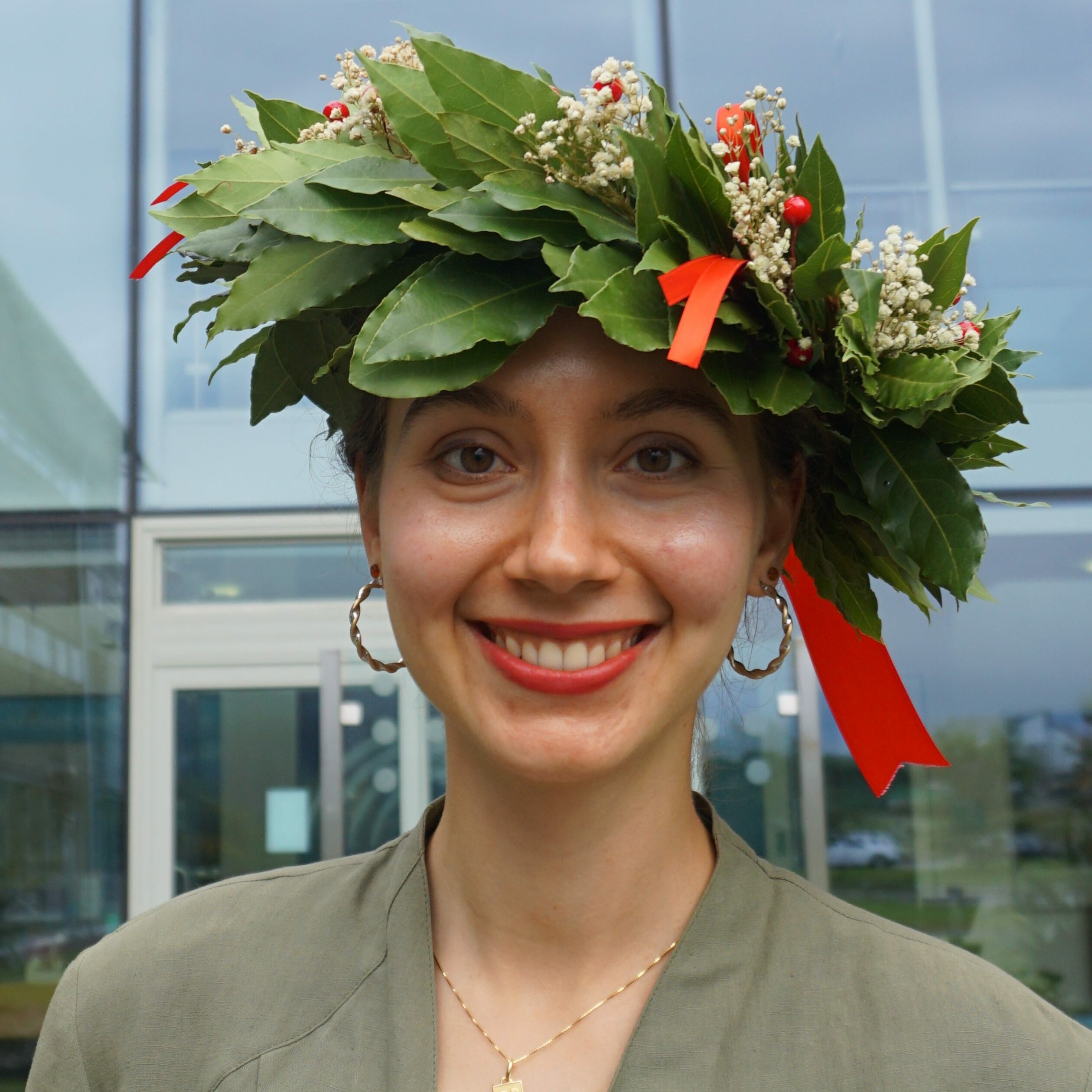
Modelling climate change impacts on Antarctic ecosystem using Atlantis, an end-to-end ecosystem model
Project 6: Sea Ice and Project 7: Krill and Ecosystems
Antarctic ecosystems are an integral part of the global ocean: they support high biodiversity, nutrient cycling and carbon sequestration, as well as fisheries and tourism. However, their structure and food web pathways are under-studied and it is not well understood how they will react to climate change. End-to-end ecosystem models are a valuable exploratory tool and may provide a better understanding of how changes in one level translate to others.
An implementation of the Atlantis model has been created for the East Antarctic region by a team of experts, and will be calibrated, tested, and run under different climate scenarios as part of my PhD project. Sea ice, iron biogeochemistry, and krill life histories and behaviours (key characteristics of marine Antarctic ecosystems) will be the core focus in testing the sensitivity of the model and its reaction to change. The output of this project will serve to inform future research directions and will add a useful tool to the marine environmental management toolbox.
The project fits within AAPP research theme 3 (Future of Antarctic Sea Ice, Krill and Ecosystems) and aligns with the overall objective to “better understand the role of the Antarctic region in the global climate system and the implications for marine ecosystems” in several ways:
- it directly relates climate change to biological components, bridging physical and biological disciplines.
- it provides useful future perspectives and scenarios for management of resources in a sensitive environment.
- it answers the need for ecosystem-based management options that span large swaths of space and time: Atlantis models can answer “what-if” questions over large timescales, which provide more information than predictions based on single species assessments.
Supervisors and their affiliation:
Dr. Sophie Bestley (IMAS)
Dr. Jessica Melbourne-Thomas (CSIRO)
Dr. Javier Porobic Garate (CSIRO)
Biography
I completed my undergraduate degree at the Scottish Association for Marine Science (SAMS-UHI, Oban, Scotland, UK). Throughout my studies, I volunteered and worked as an intern in various facilities and capacities. I learnt how to tag crabs and lobsters in a small marine station on the North Sea coastline, digitised and analysed phytoplankton abundance data, and led my own small research project on a parasite of farmed salmon in Scottish waters. This latter project cemented my desire to become a marine scientist: through the connections that I made through my supervisors and peers, I realized how data can shape industries and livelihoods.
My main interest lies in the polar seas and climate change impacts on global marine resources. I am strongly convinced that science and policy must go hand-in-hand, and that better communication between the scientific and regulatory communities is key for ocean conservation. Polar ecosystems are especially sensitive to change, have not been extensively studied, and are extremely important as biodiversity and productivity hotspots. In direct or indirect ways, through migratory species, commercial fisheries, or nutrient input in global circulation patterns, high-latitude ecosystems are invaluable, threatened, and under-researched.
With Arctic regions becoming more and more accessible to shipping, fishing, and resource extraction, there is an increasing need for involving Arctic indigenous communities in the scientific and decision-making process. I learnt this lesson during my participation during the Scottish Model Arctic Council (SCOTMAC), where youth, researchers, and experts exchanged knowledge and learnt how politics, the environment, and human health and interests are entwined.
In summary, my career has been so far varied and supported by a community of open, resourceful, and knowledgeable people. My passion for marine science was ignited by books on animal lives and stories of climate change, and these are the roots that keep me in the scientific world. My goal is to be able to provide the same support I received, and to lend my voice and research to the cause of ocean conservation.

Coupling biogeochemical cycling of iron and carbon in the Indian sector of the Southern Ocean
Project 5: Biogeochemistry
This PhD project fits into AAPP Theme 2, project 5: biogeochemistry.
By investigating the coupling between iron supply and distribution with carbon drawdown and distribution, we aim to quantitatively identify the magnitude at which iron acts as a control point in Southern Ocean productivity across spatial and temporal scales. Elucidation of the interactions between nutrient supply and carbon distributions may help to explain the variability in Southern Ocean CO2 uptake. These aims will provide a basis with which to examine future changes to Southern Ocean biogeochemistry with climate change.
Supervisors and their affiliation:
Andrew Bowie1,3; Elizabeth Shadwick2,3; Tyler Rohr3
1 Institute for Marine and Antarctic Studies, University of Tasmania, Hobart, Australia
2 CSIRO, Hobart, Australia
3 Australian Antarctic Program Partnership, Institute for Marine and Antarctic Studies, University of Tasmania, Hobart, Australia
Biography
Hailing from a background in medical research, organic chemical synthesis, and analytical chemistry (University of Melbourne, Bio21 Institute, Walter and Eliza Hall Institute), my research interests have shifted from addressing the health of human populations to the health of the earth’s climate systems after employment in both research and private industries. Formally trained as a chemist, my masters completed at IMAS in 2021 continued to use chemical tools to focus on marine trace metal chemistry and biogeochemistry. Here, lithogenic particles were used to estimate dust deposition to the subantarctic Southern Ocean and investigate links between atmospheric nutrient supply and productivity. My research interests involve the use of chemical tools to elucidate the biogeochemical processes involved in Southern Ocean nutrient supply, nutrient limitation (particularly iron), carbon cycling, carbon storage, and the effect of these processes in climatic feedback loops.
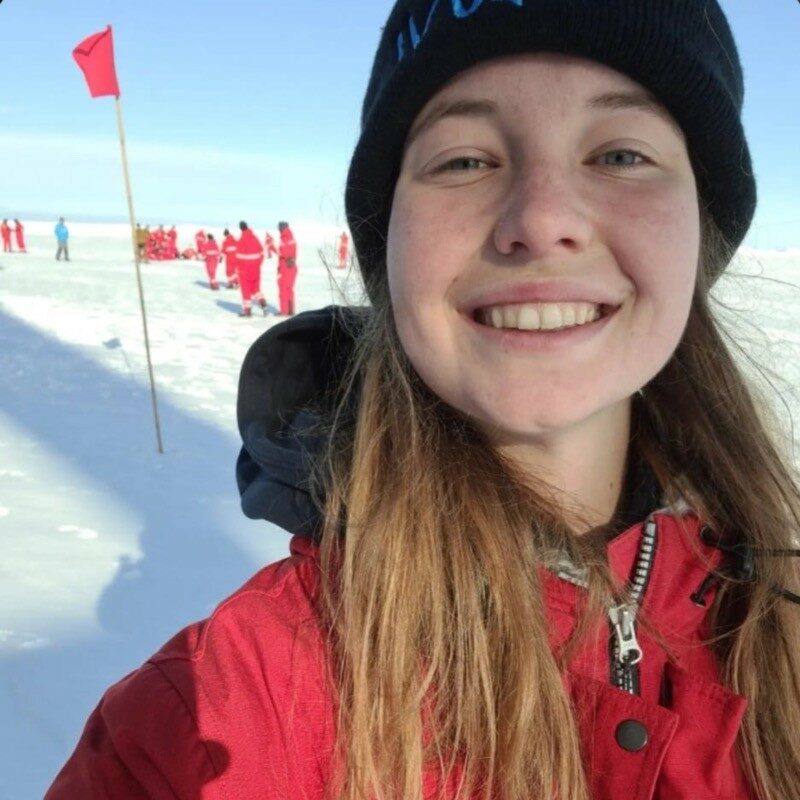
Robin van Dijk
PhD Student
Date Commenced: 1 February 2025
Social media
Cryospheric sources of trace metals along the Antarctic margins
Project 5: Biogeochemistry/Project 3: Ice Shelves/Project 4: Oceanography
The project aims to evaluate how the thawing of Antarctica may fertilise the Southern Ocean with iron. As a PhD student, I will lead trace-element sampling, analysis, and interpretation on two independent but complementary research voyages: the Denman Marine Voyage on RSV Nuyina and to the King Håkon VII Sea (KHS) on the Norwegian RV Kronprins Håkon (KPH). This project will enhance our understanding of how the melting cryosphere, particularly the Denman/Shackleton system and Fimbul Ice Shelf, affects the marine biogeochemical dynamics, including nutrients, bio-essential trace metals, and ecosystem productivity. As a QMS student, I will implement phase three of the Ocean and Sea-ice components of the Australian Community Climate and Earth System Simulator (ACCESS-OM3) for a modelling experiment, looking at ice-shelf cavity and grounding line interactions with mesoscale dynamics.
The project assembles a multidisciplinary team with extensive expertise in the Southern Ocean and its cryosphere. This PhD project contributes to AAPP’s themes Ice Shelves (3), Oceanography (4), and Biogeochemistry (5). Understanding the consequences of climate change on the Earth’s cryosphere and associated polar marine ecosystems is crucial knowledge to the objectives of the Southern Ocean Decade, a part of the United Nations Decade of Ocean Science for Sustainable Development.
Supervisors and their affiliation:
Pier van der Merwe (UTAS), Ashley Townsend (UTAS), Pearse Buchanan (CSIRO)
Biography
Through my background in marine biology and experiences on research voyages, I was infatuated by the interdisciplinary nature of ocean sciences and started seeking out interfaces to explain more complex systems that include the physics, chemistry and biology of the ocean. I am interested in how Antarctic glacier melt impacts trace metal availability for phytoplankton along the continental shelves.
Before joining the University of Tasmania, I completed a bachelor’s and master’s degree in Marine Biology in the Netherlands. During my master’s degree I got to spend time on research vessels, collecting data for my research project and after completing the degree I joined voyages as a laboratory technician at the Netherlands Institute for Sea Research (NIOZ). I am looking forward to continuing sea-going research in the next years and implement the data to inform Southern Ocean models.
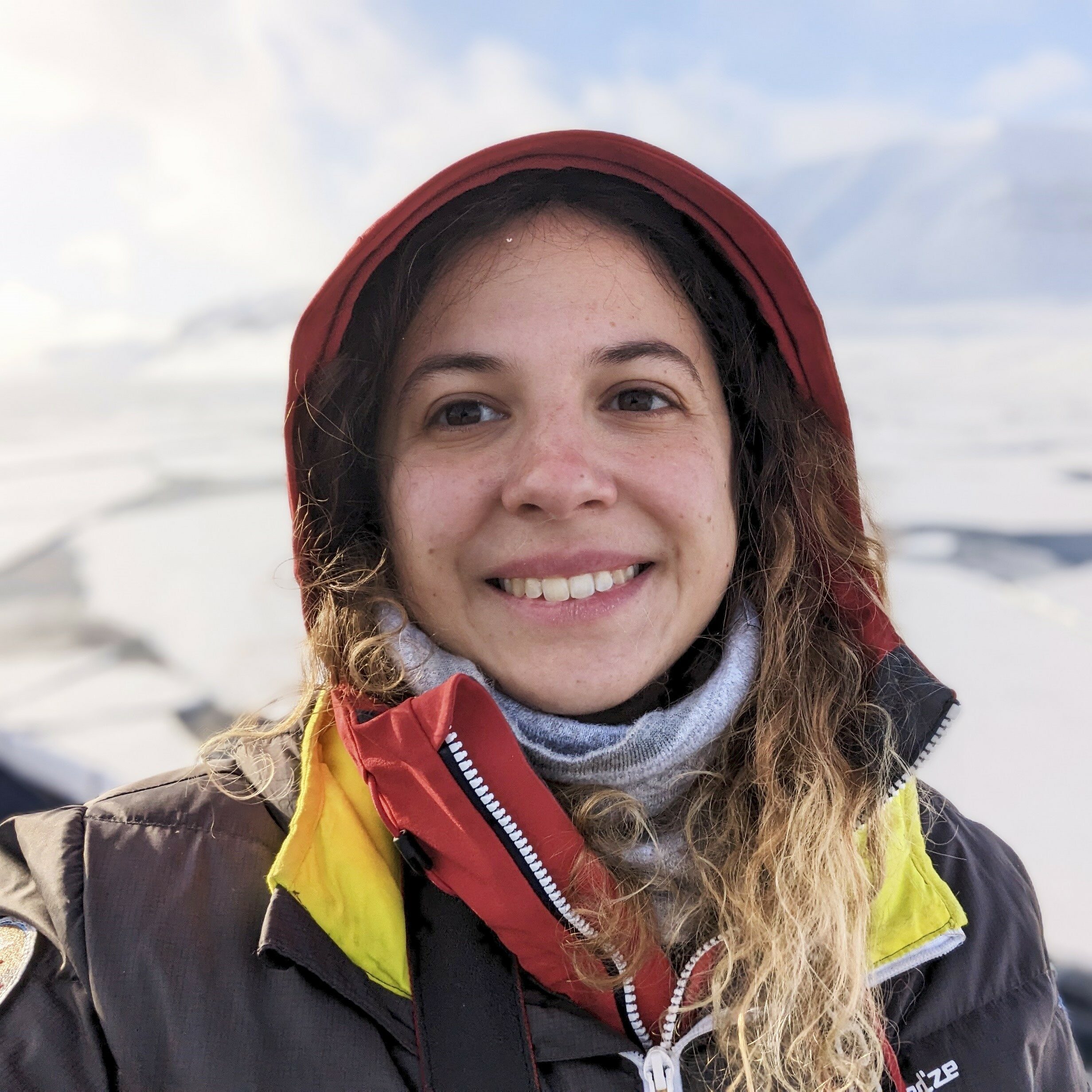
Remote sensing of lake drainage events in Antarctica
Project 3: Ice shelves
Supraglacial lakes form during the summer months from meltwater ponding in pre-existing cavities and are expected to play a crucial role in the ice sheet mass balance in the face of rising temperatures. Meltwater drainage into the ice/bedrock interface affects the sliding of the ice sheet and has been linked to fracture formation over floating ice, potentially leading to ice shelf collapse.
Observing drainage events is challenging because these lakes often have ice lids covering liquid water, and only limited examples during the summer months have been reported due to the limitations of optical sensors. My work aims to map supraglacial drainage events throughout the year for the first time and assess their impact on the stability of Antarctic ice shelves, particularly their vulnerability to hydrofracturing. Sentinel-1 SAR imagery, which operates independently of light and cloud conditions, will be used to achieve year-round monitoring at high resolution, providing further insights into the spatial and temporal evolution of these events.
My research aligns with Project 3: Ice Shelves by improving current understanding of supraglacial hydrology and its effects on the stability of floating ice shelves around the Antarctic continent.
Supervisors and their affiliation:
Sarah Thompson1,2, Vanessa Lucieer1, and Bernd Kulessa1,3
- University of Tasmania, Institute for Marine and Antarctic Studies, Australia
- Australian Antarctic Program Partnership, Institute for Marine and Antarctic Studies, University of Tasmania, Australia
- Department of Geography, Faculty of Science and Engineering, Swansea University, UK
Biography
I hold a Bachelor's degree in Computer Science and Automation Engineering from the Polytechnic University of Bari - Italy, which I completed in 2017. I earned in 2019 a joint European Master’s degree in Space Science and Technology from the Luleå University of Technology – Kiruna Space Campus, Sweden. During my time in Sweden, I became deeply fascinated by the icy landscapes around me and felt a strong desire to contribute to their preservation by specialising in satellite remote sensing technologies.
For my Master’s thesis, I conducted a research project at the University of Tokyo to detect Arctic sea ice leads from space. Following this, I returned to UTokyo to study land-fast ice in the Arctic using Sentinel-1 SAR imagery, aiming to assess its stability regimes. In 2022 I began my PhD at IMAS, developing innovative techniques to detect supraglacial meltwater and its impact on Antarctic ice shelves, utilizing a combination of different datasets with a particular focus on Sentinel-1.
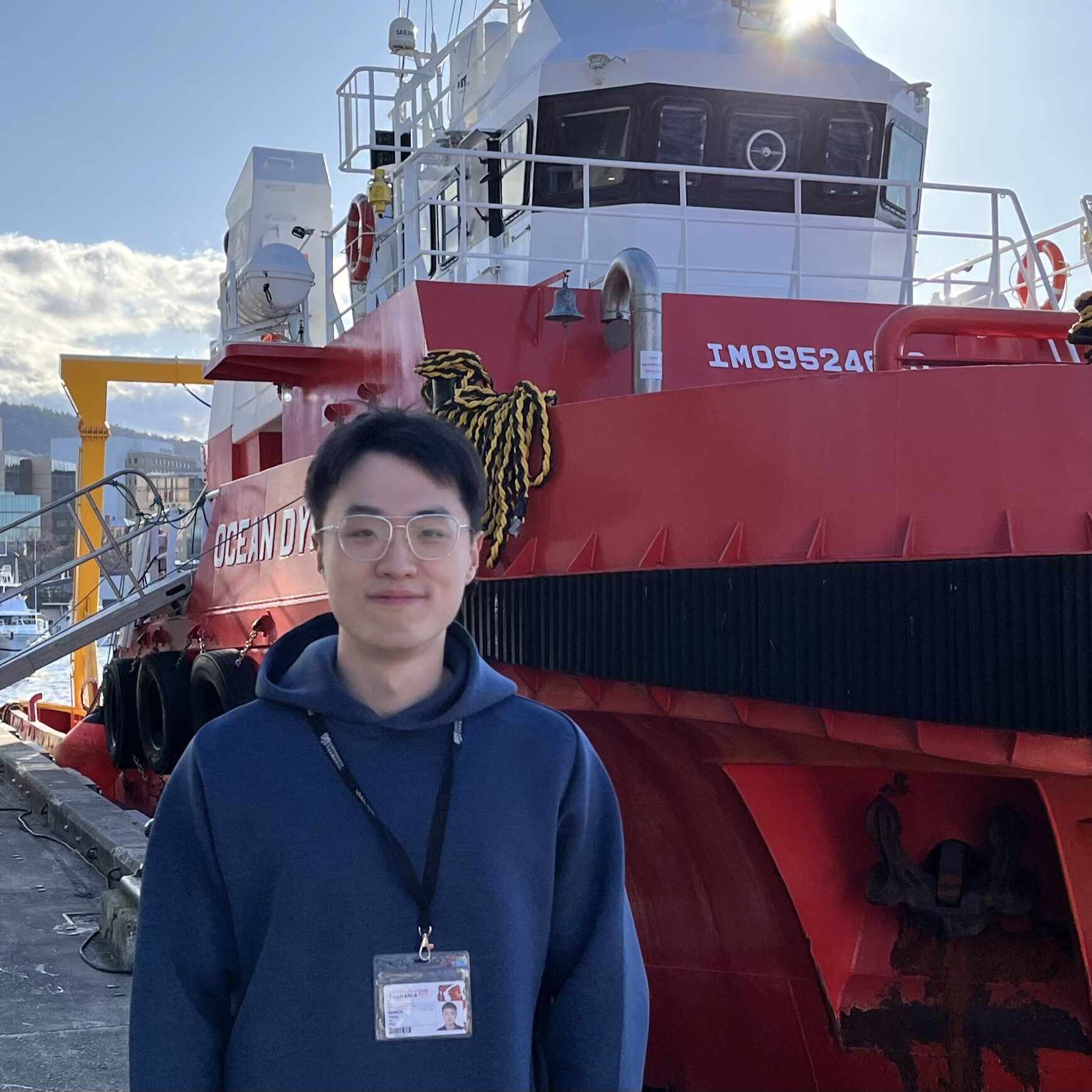
Understanding the ice-ocean interaction in Wilkes Land, Antarctica
Project 3: Ice Shelves / Project 4: Oceanography
This project closely aligns with the AAPP Project 3 (Ice Shelves) and Project 4 (Oceanography).
The Wilkes Subglacial Basin holds the largest ice volume in East Antarctica that is fully connected by subglacial troughs. With a deep landward-dipping subglacial topography, the Wilkes Basin is prone to a marine ice sheet instability that removal of a specific coastal ice volume at the margin of the Wilkes Basin will trigger a self-sustained discharge of the entire basin. This project will focus on modelling the ice-ocean interaction of the Wilkes Basin system with a coupled ice sheet-ocean model in an attempt to better understand the correlation between potential ocean thermal forcing and observed ice loss and retreat and find the evidence for ocean-induced melt being a driver for the ongoing mass loss. The modelling work will commence with the setup of a separate ice sheet model using Elmer/Ice and a separate ocean model using ROMS, Regional Ocean Modelling System. Those two models will then be coupled using FISOC, a framework for ice sheet ocean coupling.
Supervisors and their affiliation:
Chen Zhao (AAPP/IMAS); Ben Galton-Fenzi (AAD/IMAS); Elisa Mantelli (IMAS)
Biography
I am interested in the ice-ocean system and would like to study ice dynamics and its impact on global sea level rise with a coupled ice sheet-ocean model.
In 2021, I completed my BSc at the Ocean University of China, and also a BSc hons at IMAS. My Honours project was to study the thermal structure of the Amery Ice Shelf, East Antarctica, through borehole observations and numerical simulations. After that, I had a six-month visiting study on ice sheet modelling in Moore Lab of Beijing Normal University.

Investigating Southern Ocean meridional fluxes from ARGO within the framework of a time-varying Gravest Empirical Mode climatology of watermass properties
Project 4: Oceanography
This PhD project aims to create a comprehensive climatology of physical water properties in the Southern Ocean, to explain variability in meridional and zonal fluxes of heat and freshwater across the Antarctic Circumpolar Current (ACC) fronts. The ACC is incredibly dynamic, with fronts fluctuating in response to seafloor instabilities, creating eddies and meandering through the circumpolar path. Constructing an average to combine all these occurrences results in a climatology that does not resolve the rich frontal structure of the region. To overcome this, we will create a Gravest Empirical Mode (GEM) climatology, projecting hydrographic data onto a baroclinic stream function coordinate, allowing access to knowledge of the subsurface thermohaline structure of the ACC. This GEM field will be enhanced to include satellite mean sea level anomalies, creating a time varying field from 1992-2022 allowing for trends to be discerned. Additionally, this GEM field will include ageostrophic forcing components to allow analysis of fluxes through time, something unobtainable through previous GEM fields. The resulting climatology will be utilised to analyse heat and freshwater fluxes, eddy mixing, and to document the changing trends of the Southern Ocean and its circulation.
This project addresses the Project 4 (Oceanography) key science question ‘How will Southern Ocean feedbacks alter the pace of climate change?’, assessing how and why the Southern Ocean is changing through time.
Supervisors and their affiliation:
Nathan Bindoff – IMAS/AAPP, Helen Phillips – IMAS, Annie Foppert – IMAS/AAPP
Biography
Coming from a small, inland town in country Victoria opportunities to get to the ocean were rather limited for me growing up. As is often the case, those things that seem far away or unreachable become a fascination. This was the I wanted to undertake marine science and the motivation for undertaking my Bachelor of Marine and Antarctic Science at UTAS. I completed my Honours project in 2020 at IMAS, focussing on Indian Ocean heat content. Specifically, Argo data was used to analyse changes in heat content in Subantarctic Mode Water and Antarctic Intermediate Water along Australia’s Indian Ocean boundary current pathways from 2004-2019. My research interests are largely based on large scale circulation. I find the transport and storage of heat, freshwater, and nutrients in the ocean fascinating, and believe that understanding these pathways will become increasingly important in a changing climate.
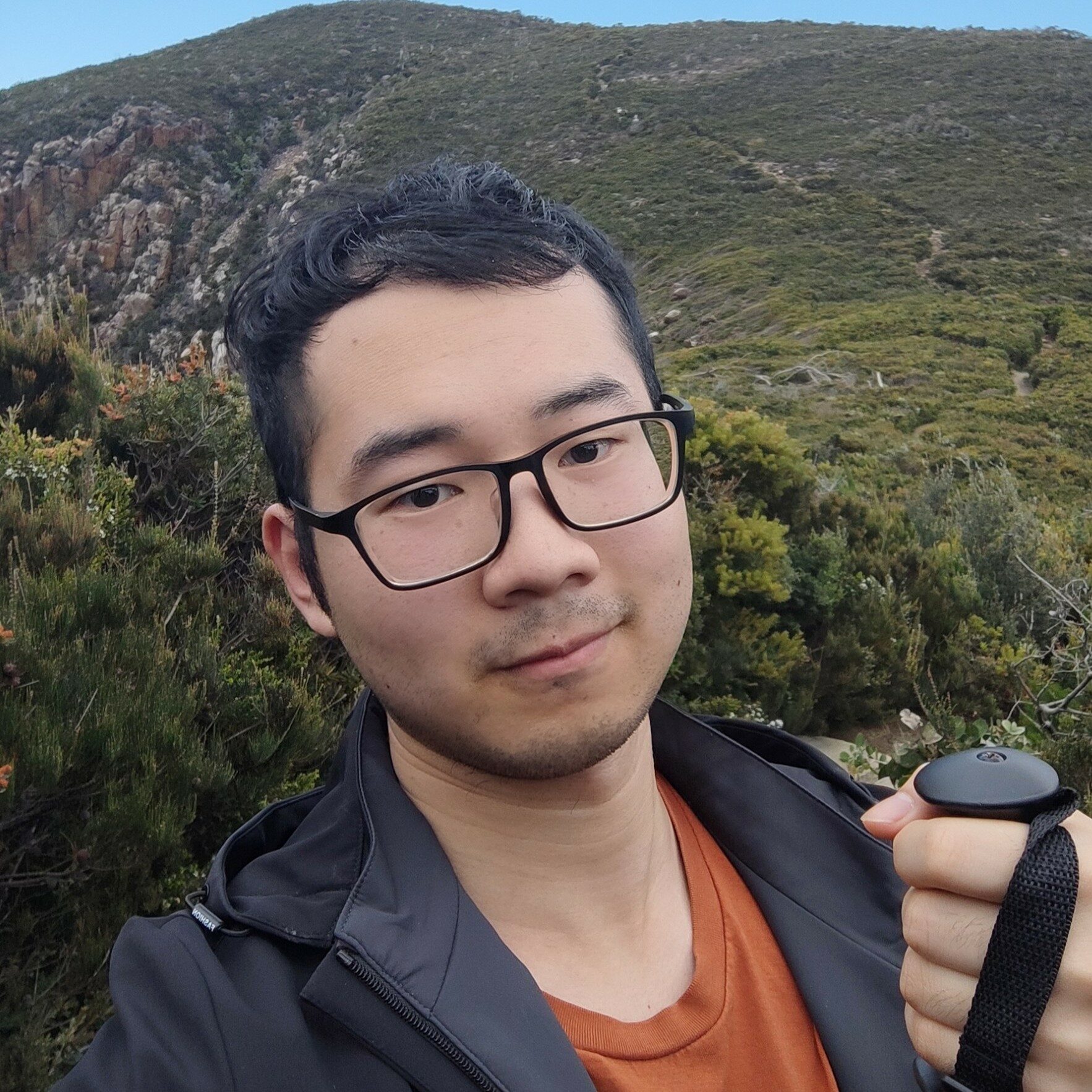
Standing meander in the Southern Ocean
Project 4: Oceanography
My topic aligns with AAPP Project 4 Oceanography. This project aims to investigate the temporal variation of the standing meander and estimate its response time to the varying wind stress forcing. The standing meander’s response will be analysed systematically, from the viewpoints of energy, momentum, and vertical density, and seek explanations for altering response lag with different external forcing. This project aligns with the key question of project 4 to understand Southern Ocean feedback with altering climate.
Supervisors and their affiliation:
Edward Doddridge (IMAS, AAPP); Stuart Corney (IMAS, AAPP); Nathan Bindoff (IMAS, AAPP)
Biography
I am Heng Xu, with a passion for ocean physical and dynamics mechanism research. I graduated from 2+2 Ocean University China and UTAS bachelor project and started the PhD project later. During the Honours year of my 2+2 project, my research was about the ‘seasonality and interannual variability of the Leeuwin Undercurrent outflows’.
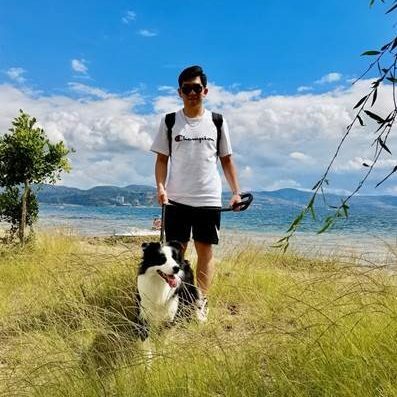
Drivers of changes in air-sea CO2 exchange and carbon cycling in the Subantarctic and coastal East Antarctica
Project 5: Biogeochemistry
The project will use a combination of field observations from the IMOS Southern Ocean Time Series (SOTS) moorings, the Southern Ocean Large Areal Carbon Export (SOLACE) and Trends in Euphausiids off Mawson, Predators and Oceanography (TEMPO) voyages, and BGC-Argo floats to understand drivers of changes in the ocean carbon system. The project addresses SOOS Science challenges #1 (Constraining variability in the Southern Ocean CO2 sink over different temporal scales and across regions) and #3 (Assessing the extent and impact of ocean acidification across the Southern Ocean) from theme 3 (Understanding and quantifying the state and variability of the Southern Ocean carbon and biogeochemical cycles) identified by the international research community in the new SOOS Science and Implementation Plan. The aims and proposed thesis chapters are as follows:
1. Assessment of the response of Subantarctic CO2 system seasonality and annual carbon export to the Southern Annular Mode (SAM).
2. Multi-platform comparison of air-sea CO2 fluxes in Subantarctic and coastal Antarctic regions.
3. Investigation of cross-shelf exchange on carbon system dynamics in the East Antarctic sector.
Supervisors and their affiliation:
Pete Strutton (IMAS, CLEX), Cathryn Wynn-Edwards (IMAS, AAPP), Elizabeth Shadwick (CSIRO, AAPP)
AAPP Objective:
This PhD project will directly contribute to the milestones of the Australian Antarctic Program Partnership (AAPP) under Themes 2 (The Nature and Impacts of Southern Ocean Change), specifically, to the Biogeochemistry Project 5 by advancing our understanding of carbon uptake in the Southern Ocean which is a first step in addressing how the region will respond to the changing climate. This project will also contribute to AAPP Theme 3 (The Future of Antarctic Sea Ice, Krill & Ecosystems), to the international Southern Ocean Observing System (SOOS) and IMAS Research priority #9 – Ocean and Antarctic Physics and Chemistry.
Biography
I spent my undergraduate degree in the Ocean University of China and the University of Tasmania, and finished my Honours project in IMAS/UTAS, which is about “Physical drivers of biogeochemical variability in the Polar Front meander”. During the meantime, I have won the ARC CELX Honours scholarship and been awarded as Executive Dean’s Honour Roll in the College of Sciences and Engineering, UTAS. I have get interested in the biogeochemical cycle, their drivers/ limitations and also being attracted by how the plankton affect the biosphere, especially the carbon cycle between sea-air. This will also be the main research content of my PhD.

Identifying formation mechanisms of bubble free layers in Law Dome ice core, East Antarctica, using the SNOWPACK model
Project 2: Ice cores
Physical features in ice cores provide unique records of past atmospheric variability. We identified 1-2 mm thick ice layers without bubbles in surface ice cores from Law Dome, East Antarctica occurring on average five times per year. The origin of these bubble free layers is unknown.
In our preliminary research, we discovered this bubble-free layer may represent a new, synoptic scale climate-weather proxy which may preserve past variability in atmospheric circulation of the southern Indian and southwest Pacific Oceans. The aim of this study is to further investigate the formation and preservation mechanisms of bubble-free layers, and then explore the bubble-free layer as a climate proxy.
The SNOWPACK model is a vertical, one-dimensional multilayer land-surface snow model, which can simulate the development of the snowpack and produce snow profiles based on meteorological data. We use SNOWPACK model run reanalysis climate data (ERA5) to simulate the formation of bubble-free layers. Then, in SNOWPACK, we test the climate factors controlling bubble-free layers' formation and preservation. Based on these climate controlling factors, we will match them with climate processes driving them to link the occurrence of bubble-free layers with atmospheric process/processes.
Supervisors and their affiliation:
Tessa R. Vance1, Alexander D. Fraser1, Lenneke M. Jong1,2, Sarah S. Thompson1
1Australian Antarctic Program Partnership, Institute for Marine & Antarctic Studies, University of Tasmania, Battery Point 7004, Tasmania Australia
2Australian Antarctic Division, Channel Highway, Kingston 7050, Australia
Biography
I am Lingwei Zhang, a PhD student in the ice core group. I am interested in studying paleoclimatology through the analysis of ice cores from Antarctica. My primary research interest lies in deciphering past atmospheric conditions to better understand contemporary climate change phenomena.
Publications
Crockart, C. K., Vance, T. R., Fraser, A. D., Abram, N. J., Criscitiello, A. S., Curran, M. A. J., Favier, V., Gallant, A. J. E., Kittel, C., Kjær, H. A., Klekociuk, A. R., Jong, L. M., Moy, A. D., Plummer, C. T., Vallelonga, P. T., Wille, J., and Zhang, L.: El Niño–Southern Oscillation signal in a new East Antarctic ice core, Mount Brown South, Clim. Past, 17, 1795–1818, https://doi.org/10.5194/cp-17-1795-2021, 2021.
Zhang, L., Vance, T. R., Fraser, A. D., Jong, L. M., Thompson, S. S., Criscitiello, A. S., and Abram, N. J.: Identifying atmospheric processes favouring the formation of bubble free layers in Law Dome ice core, East Antarctica, EGUsphere [preprint], https://doi.org/10.5194/egusphere-2023-611, 2023.
Conferences
Zhang L., Vance, T. R., Fraser, A. D., Jong, L. M., Criscitiello, A. S., and Abram, N. J., Moy, A., Plummer, C., Roberts, J., Vallelonga, P., Curran, M., Treverrow, A., Favier, V., Identifying atmospheric processes favouring the formation of bubble free layers in Law Dome ice core, East Antarctica. International Conference on Southern Hemisphere Meteorology and Oceanography. Online, 8-17th February 2022.
Zhang L., Vance, T. R., Fraser, A. D., Jong, L. M., Thompson, S. S., Criscitiello, A. S., and Abram, N. J., Identifying atmospheric processes favouring the formation of physical features in the Mount Brown South ice core. Online, Scientific Committee on Antarctic Research (SCAR) Open Science Conference, 2-7th August 2020.
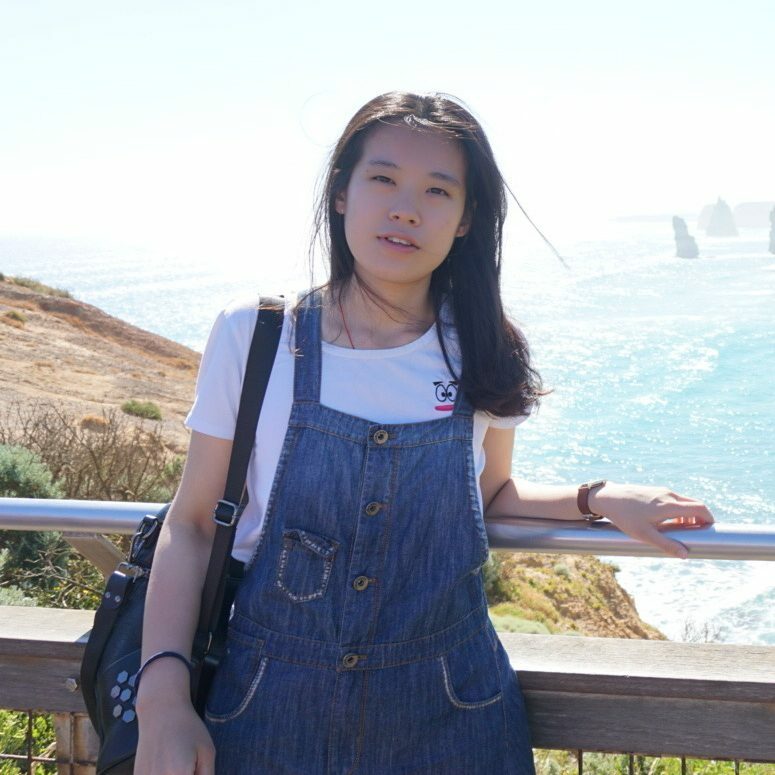
The role of small-scale ocean dynamics for equilibration of the Antarctic Circumpolar Current and its sensitivity to wind
Project 4: Oceanography
The Antarctic Circumpolar Current (ACC) is a strong current flowing eastward around the Antarctic continent and connecting major ocean basins, intimately related to global climate. The ACC dynamics and how it equilibrates in response to the wind variation remain unclear and is an area of active research. Previous studies suggested the ACC remains insensitive although the surface wind is recorded to increase over the past decades. This project aims to explore further the ACC equilibration mechanisms and its sensitivity to the surface wind from a range of perspectives including momentum, vorticity and energy budgets, which will help us understand better the ACC’s response to the changing climate. This study focuses on standing meanders, which are storm tracks in the ocean and are regions of enhanced eddy activity, strong meridional heat fluxes and vertical momentum transfers. Therefore, this work is relevant to the oceanography project in ‘Nature and Impacts of Southern Ocean Change’ program.
Supervisors and their affiliation:
Maxim Nikurashin (AAPP, UTAS); Beatriz Pena-Moino (AAPP,CSIRO); Stephen Rintoul (AAPP,CSIRO); Edward Doddridge (AAPP,UTAS)
Biography
Xihan Zhang is a UTAS phD student supported by the Quantitative Marine Science program. She is particularly interested in the dynamics of the Antarctic Circumpolar Current and its response to the changing climate. She completed Msc in Earth Science at Australian National University, after finishing Bsc in physical oceanography in a joint program between Ocean University of China and University of Tasmania.

